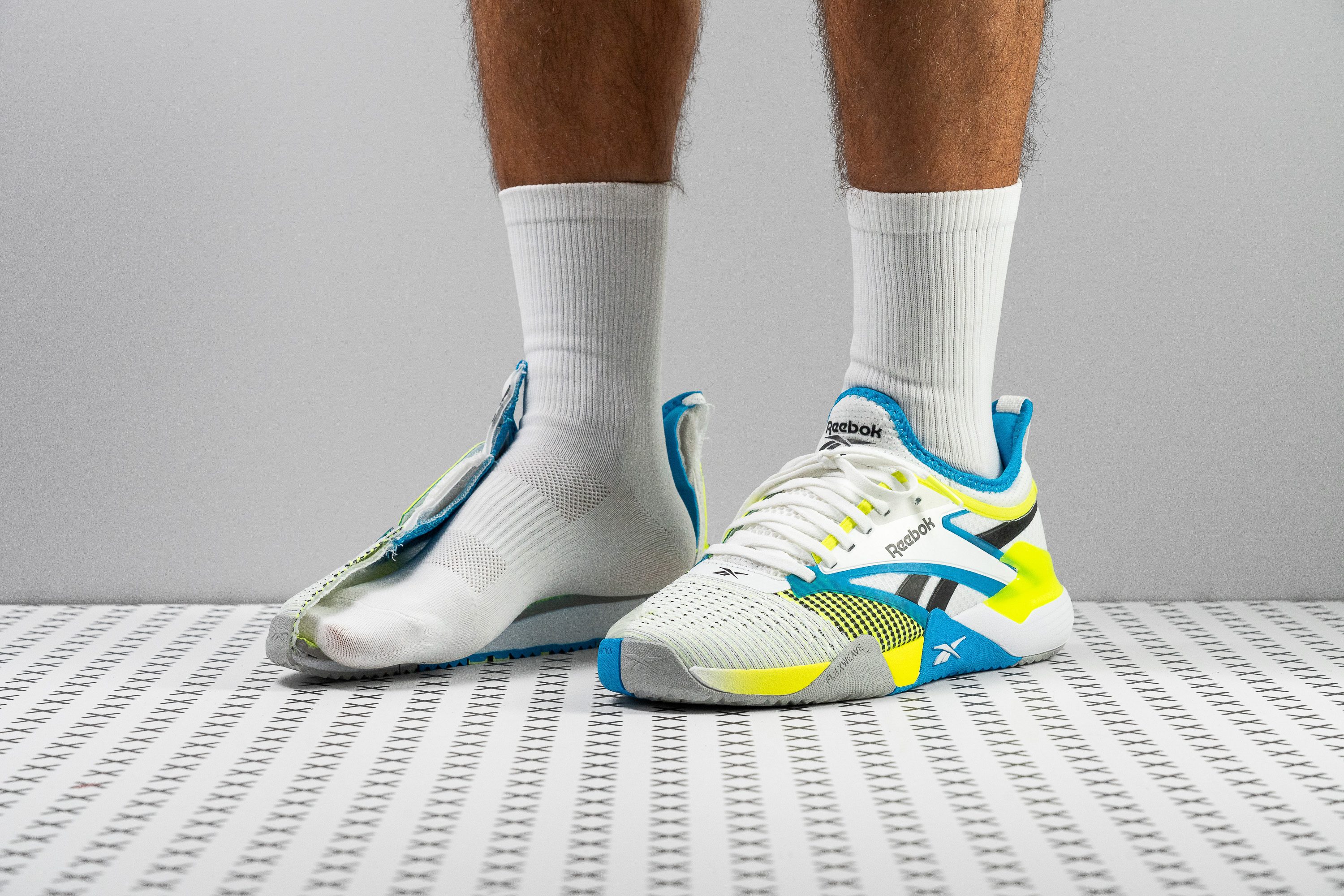Nuestra conclusión
Pros
- Muy buen agarre
- Amortiguación reactiva Floatride
- Transpirabilidad de 10
- Estabilidad lateral sólida
- El upper se fusiona con el pie
- Ideales para pies estrechos
- Puedes utilizarlas dentro y fuera de la pista
- Captan todas las miradas
Contras
- Mala durabilidad y resistencia a la abrasión
- Drop demasiado drástico
- No son aptas para pies anchos
- No son aptas para los jugadores de fondo
Veredicto de los usuarios
Comparativa
Las zapatillas de tenis más parecidas
+ + Añadir unas zapatillas | |||||
|---|---|---|---|---|---|
| Puntuación global | 86 Notables | 78 Buenas | 86 Notables | 89 Notables | |
| Precio | 230 € | 75 € | 120 € | 150 € | |
| Tipo de calzado | Todas las superficies | Todas las superficiesPista dura | Todas las superficiesPista dura | Todas las superficiesPista dura | |
| Absorción de impactos | Alta | Baja | Alta | Moderada | |
| Retorno de energía | Alto | Moderado | Bajo | Alto | |
| Tracción | Moderada | Alta | Moderada | Moderada | |
| Diseño | Velocidad | Estabilidad | Velocidad | Velocidad | |
| Transpirabilidad | Alta | Alta | Media | Media | |
| Peso laboratorio | 13.6 oz / 386g | 11.3 oz / 319g | 12.2 oz / 347g | 11.7 oz / 332g | |
| Lightweight | ✗ | ✓ | ✓ | ✓ | |
| Drop laboratorio | 14.7 mm | 10.2 mm | 11.8 mm | 10.7 mm | |
| Anchura / ajuste | Ancha | Media | Media | Media | |
| Anchura de la parte delantera | Media | Media | Media | Media | |
| Talla | Tallan un poquito pequeño | Tallan un poquito pequeño | Tallan bien | Tallan un poquito pequeño | |
| Rigidez de la mediasuela | Equilibrada | Equilibrada | Equilibrada | Firme | |
| Flexibilidad | Flexible | Flexible | Flexible | Flexible | |
| Rigidez torsional | Moderadas | Moderadas | Moderadas | Moderadas | |
| Rigidez del contrafuerte del talón | Moderadas | Flexibles | Moderadas | Firmes | |
| Anchura de la mediasuela - antepié | Estrecha | Estrecha | Estándar | Muy estrecha | |
| Anchura de la mediasuela - talón | Estrecha | Estrecha | Estándar | Muy estrecha | |
| Durabilidad de la suela exterior | Mala | Decente | Buena | Mala | |
| Durabilidad del acolchado del talón | Media | Baja | Alta | Alta | |
| Altura de la suela en la zona del talón laboratorio | 30.8 mm | 28.6 mm | 28.8 mm | 30.2 mm | |
| Antepié | 16.1 mm | 18.4 mm | 17.0 mm | 19.5 mm | |
| Grosor de la plantilla | Gruesa | Estándar | Gruesa | Estándar | |
| Plantilla extraíble | ✓ | ✓ | ✓ | ✓ | |
| Tirador del talón | Tirador circular | Ninguno | Talón extendido | Talón extendido | |
| Durabilidad de la parte delantera | Decente | Mala | Buena | Buena | |
| Dureza de la suela | Dura | Estándar | Estándar | Estándar | |
| Grosor de la suela | Estándar | Estándar | Fina | Muy fina | |
| Clasificación | #17 Top 44% | #33 15% inferior | #16 Top 42% | #8 Top 21% | |
| Popularidad | #29 25% inferior | #14 Top 36% | #22 43% inferior | #7 Top 18% |
Quién debería comprárselas
En nuestra opinión, los jugadores que más partido les sacarán a las Reebok Nano Court son:
- Los que no son profesionales de los deportes de raqueta pero juegan de vez en cuando al tenis, al pickleball, al padel, al racquetball o al bádminton.
- Los que juegan principalmente en interiores.
- Las personas con pies estrechos o medios.
- Las personas que juegan en todo el campo y que no necesitan unas zapatillas muy estables.
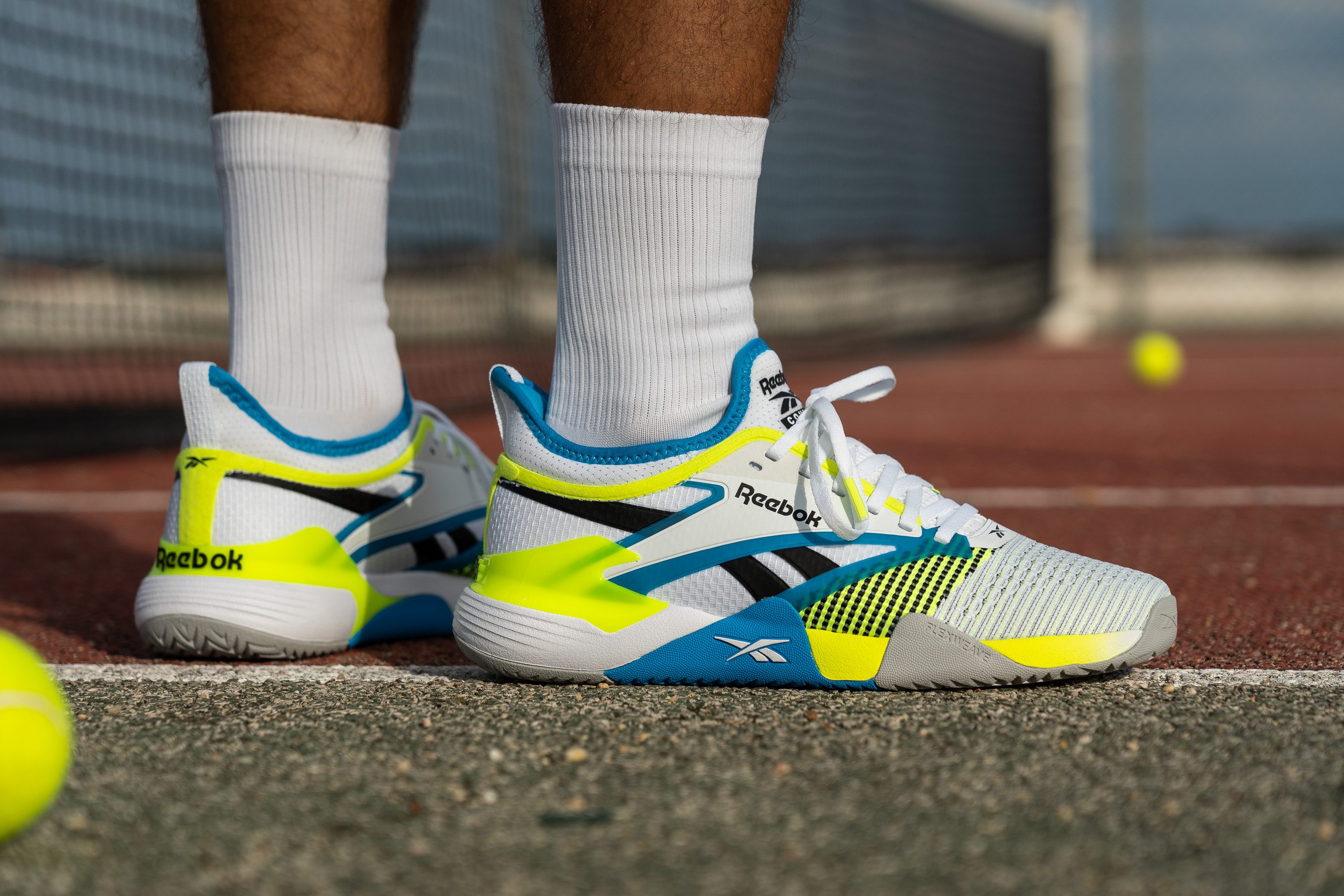
Quién NO debería comprárselas
Pero también encontramos más de una razón por la que las Nano Court, probablemente, no serán las mejores zapatillas de tenis para algunos corredores.
Aquí tienes tanto las razones como las alternativas que te proponemos:
- Si tienes los pies anchos y/o planos: K-Swiss Hypercourt Express 2 (también son más duraderas).
- Si eres un jugador de línea de fondo: ASICS Gel Challenger 14 o ASICS Gel Resolution 9 (MUCHO más duraderas).
Además, todas estas zapatillas tienen un drop moderado que no empujará tus pies hacia delante tanto como el drop de 14,7 mm de las Nano Court.
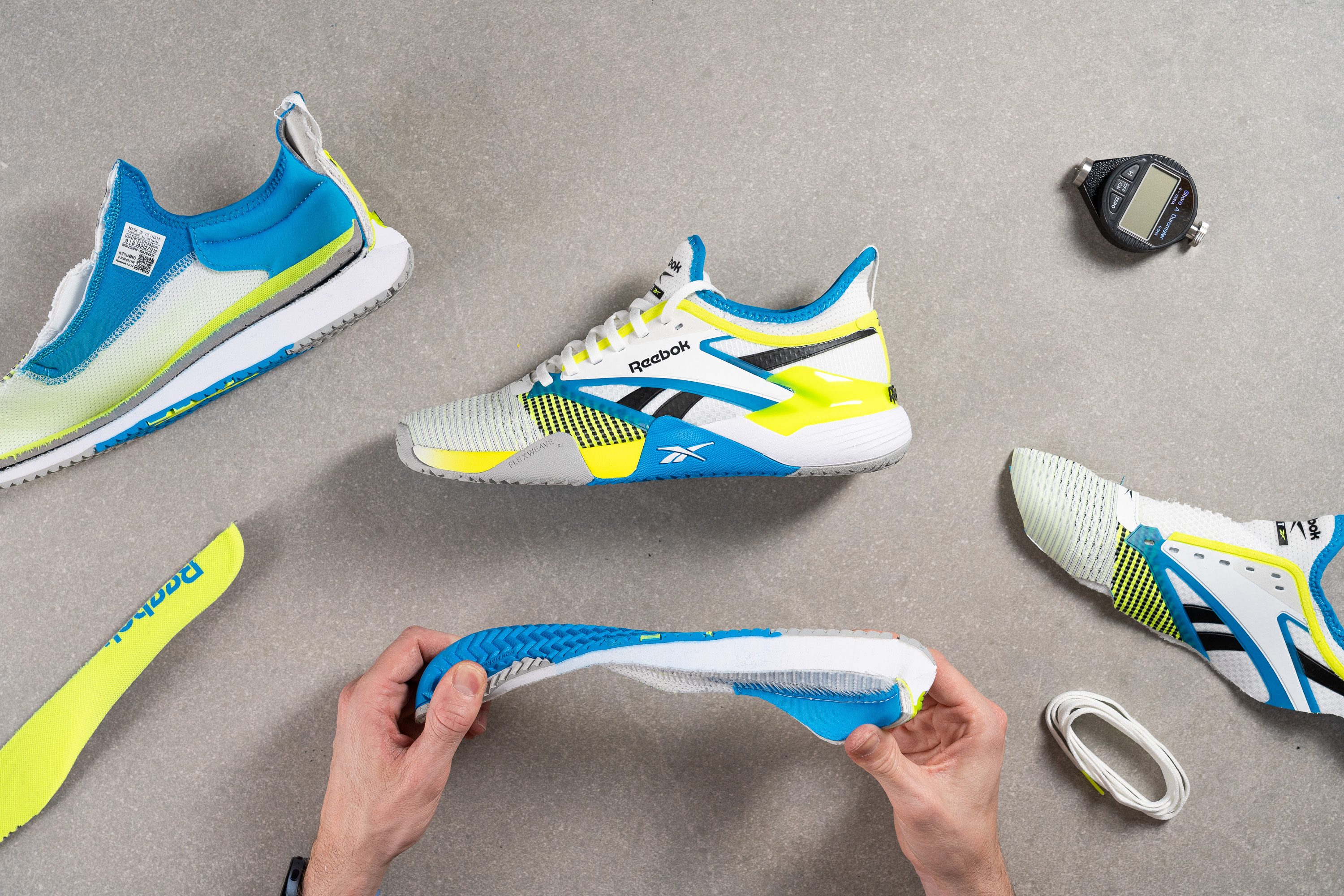
Amortiguación
Shock absorption
La marcada diferencia entre la altura del talón y del antepié de las Nano Court se refleja también en sus distintos resultados en nuestra prueba de absorción de impactos.
El el talón se llevaron un resultado 109 SA, que es casi el doble de lo que obtuvieron al analizar el antepié: 56 SA. Vamos, que ofrecen bastante más amortiguación en la parte de atrás y te dejan sentir bien la pista bajo los dedos del pie.
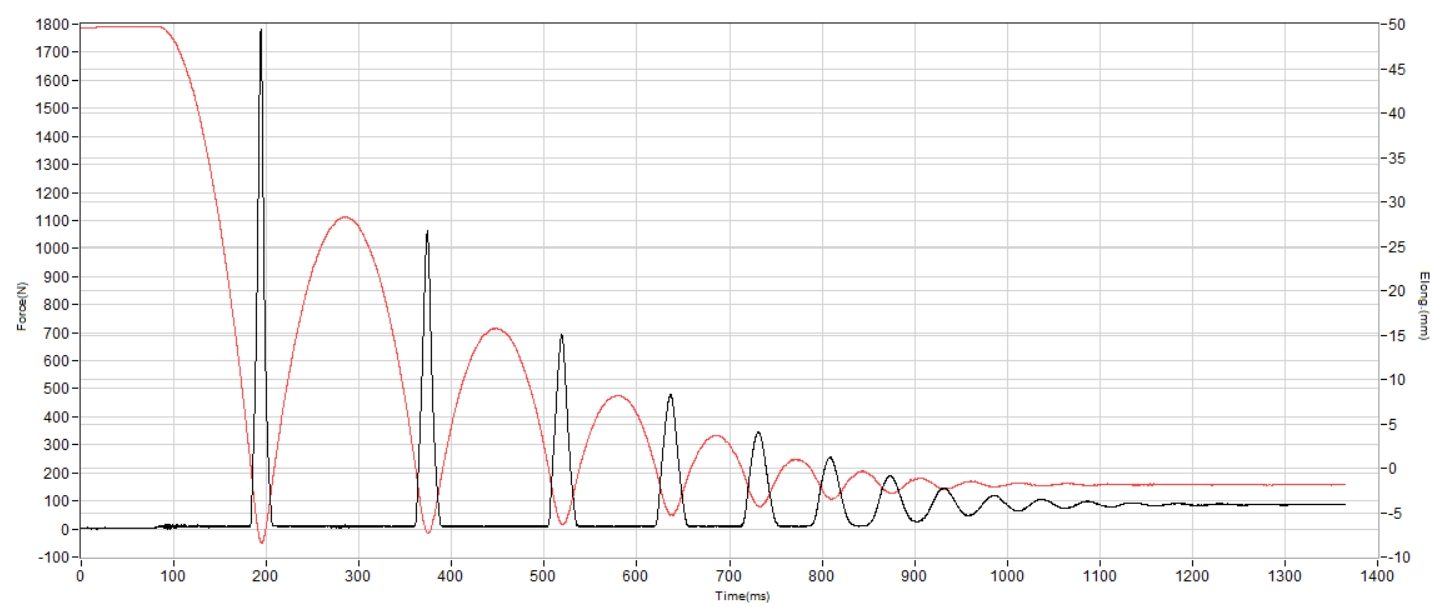
| Nano Court | 109 SA |
| Media | 99 SA |
Energy return
Estas Reebok también ofrecen bastante impulso, con un retorno de energía más alto que la media en el talón (59,6 %) y en el antepié (61 %).
Esta reactividad hizo que no tuviésemos que esforzarnos tanto al saltar o al esprintar, haciendo que la pisada fuese bastante dinámica.
| Nano Court | 59.6% |
| Media | 48.8% |
Altura de la suela en la zona del talón
Cargadas con una buena cantidad de espuma en su mediasuela, estas Reebok llegan a los 30,8 mm cuando medimos la altura de su suela en el talón.
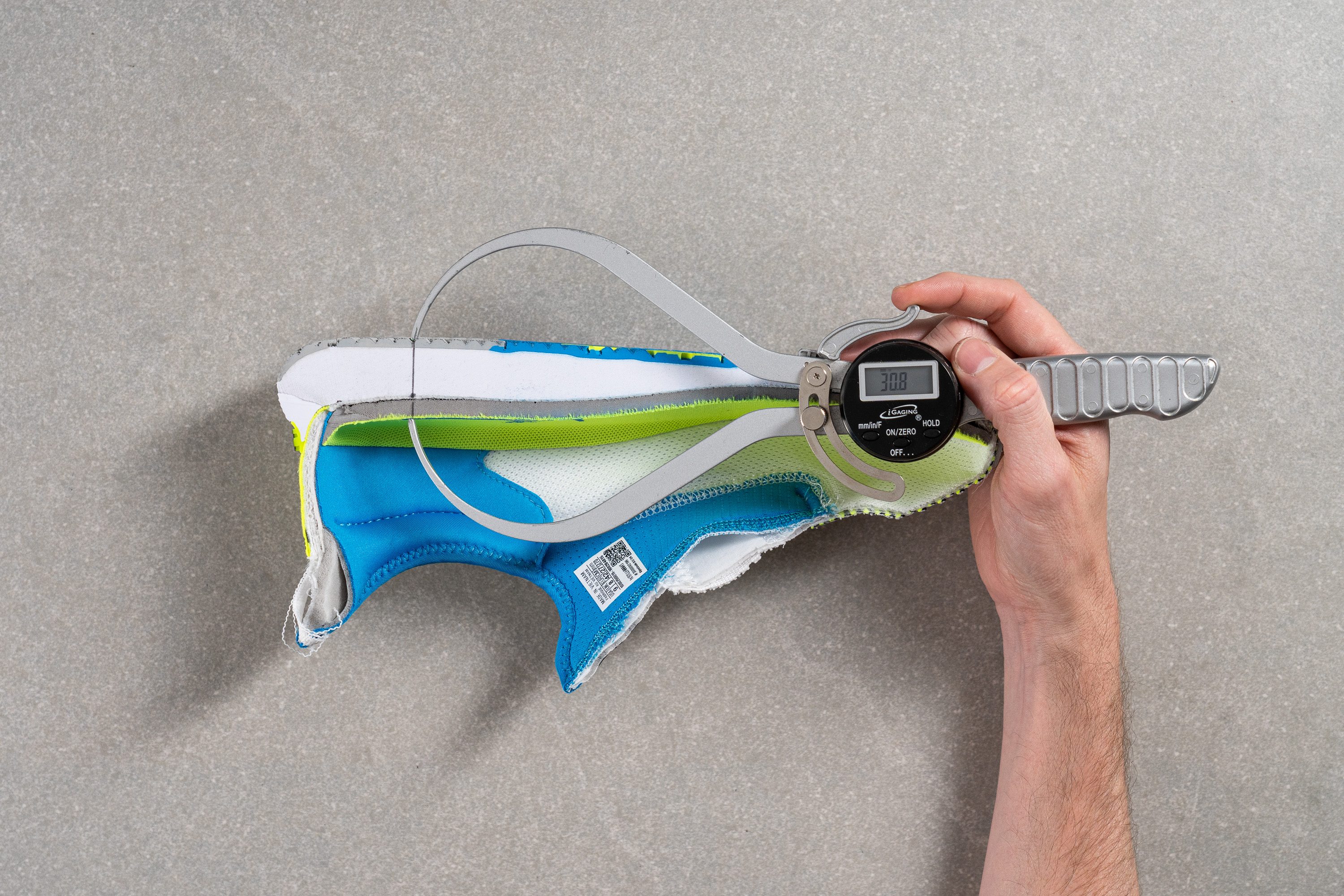
Están en el grupo de modelos más mullidos dentro de nuestro catálogo de zapatillas de tenis, ofreciendo mucha protección contra impactos en el talón.
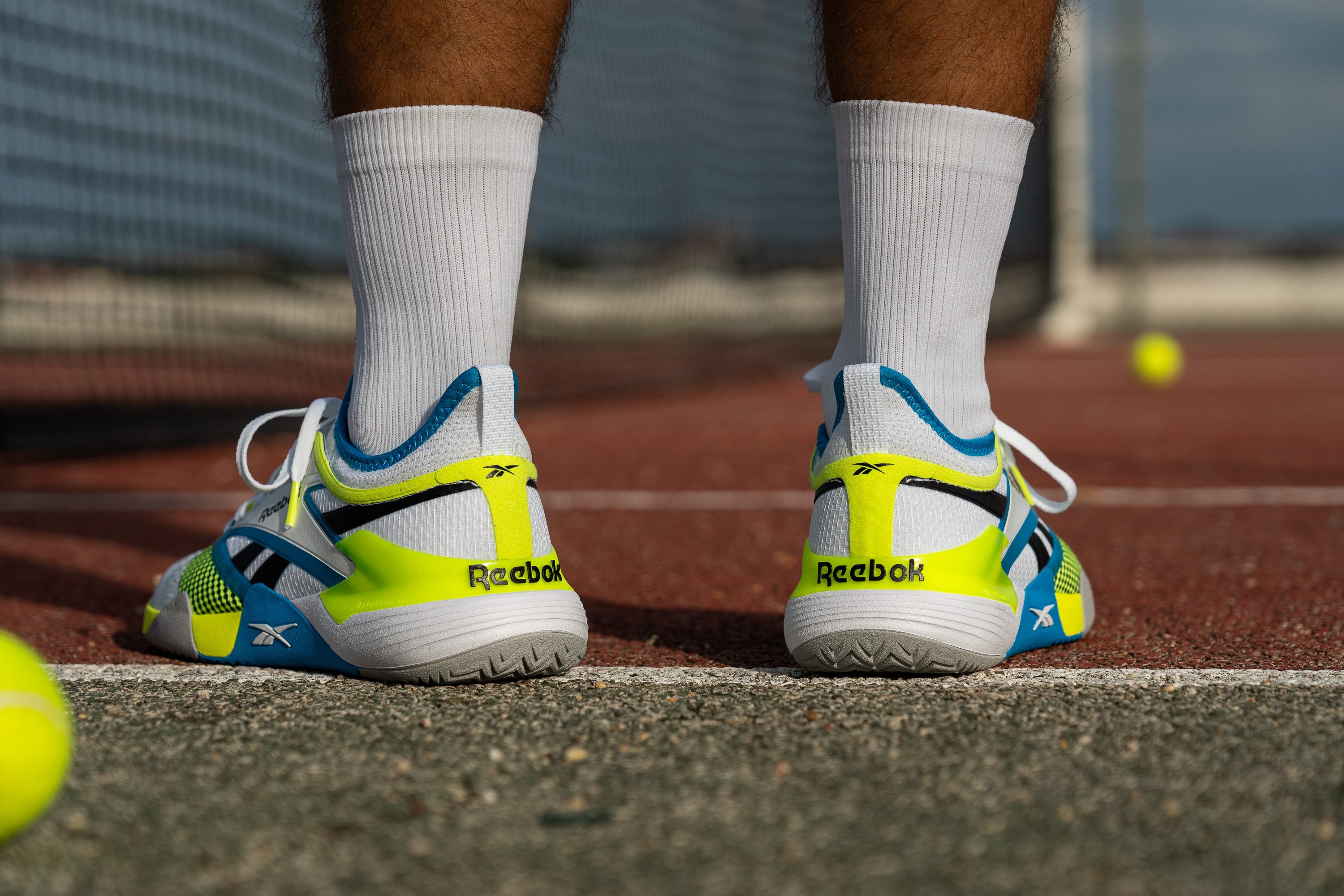
| Nano Court | 30.8 mm |
| Media | 29.2 mm |
Altura de la suela en el antepié
Pero aquí es donde la cosa se complica...
En el antepié de las Nano Court, la suela solo mide 16,1 mm. Es la más baja que hemos visto entre todas las zapatillas de tenis que han pasado por nuestro laboratorio.
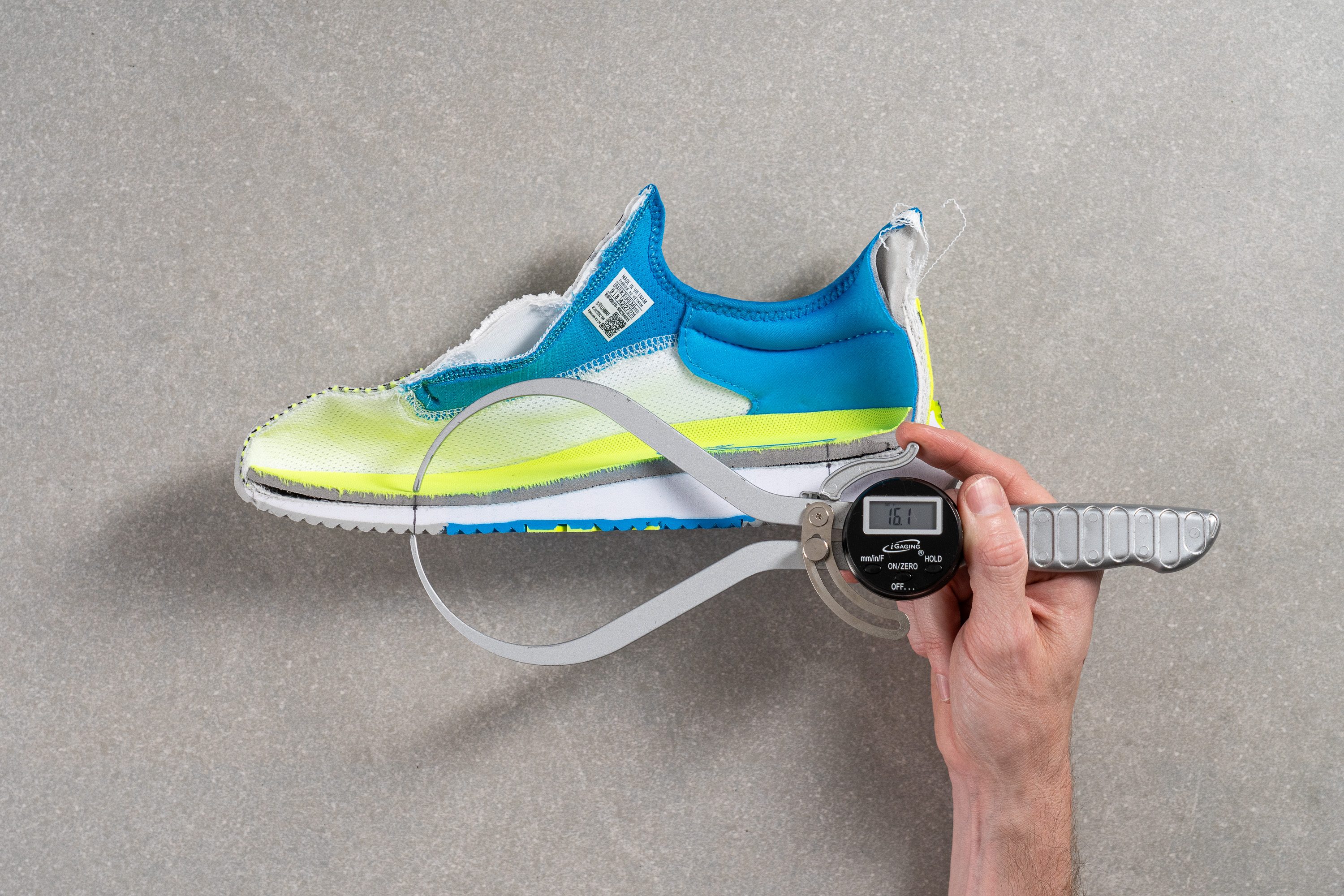
Claramente, la pista se siente mucho bajo los pies con este diseño, pero..., ¿por qué la marca optó por una suela tan baja? Al final las puntas de nuestros pies empezaron a notar el impacto de los golpes en la pista cuando llevamos ya un buen rato jugando.
Creemos que unos milímetros más de espuma proporcionarían la amortiguación necesaria sin poner en riesgo el sentir la pista bajo los pies.
| Nano Court | 16.1 mm |
| Media | 19.5 mm |
Drop
La verdad es que que la marca optase por un drop tan drástico nos dejó boquiabiertos.
A ver, es normal que las zapatillas de tenis tengan un drop más bien alto para poder adaptarse a los movimientos constantes de inclinación hacia delante que implica este deporte, pero normalmente ronda los 10 mm..., ¡y las Nano Court lo han subido a 14 mm!
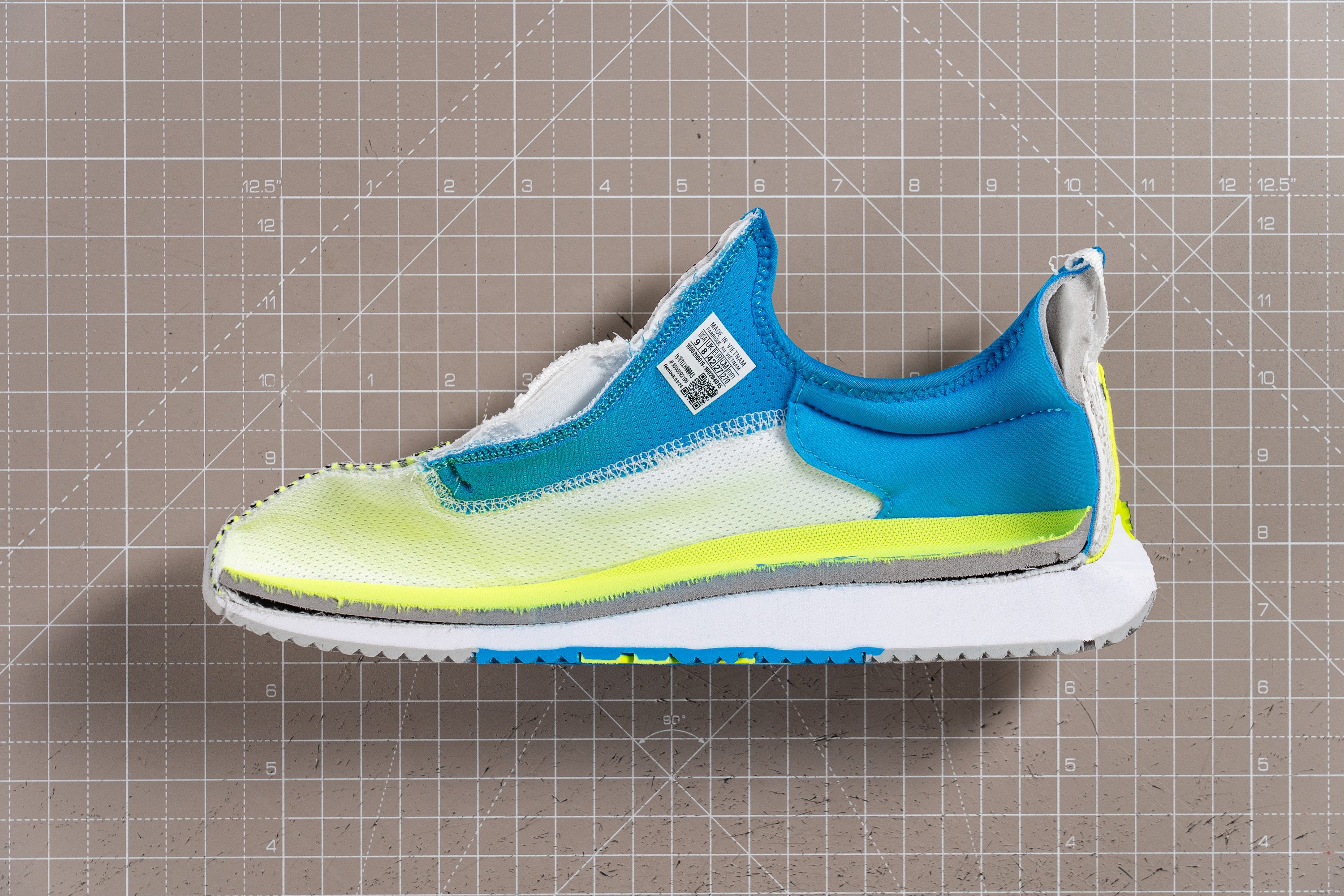
En nuestra opinión, esto podría ser más perjudicial que beneficioso, ya que la mayoría de los jugadores están acostumbrados a tener entre 8 y 10 mm de drop, y puede que 14,7 mm sea demasiado.
Creemos que un drop más moderado haría que más deportistas disfrutasen de estas zapatillas, además de que reduciría al mínimo la posibilidad de que los dedos se golpeasen contra la parte delantera de las mismas o de que hubiese deslizamiento del talón, entre otros problemillas.
| Nano Court | 14.7 mm |
| Media | 9.7 mm |
Suavidad de la mediasuela
Eso sí, nos ha encantado que la marca haya optado por la amortiguación Floatride en las Reebok Nano Court. Esta espuma de TPU es de todo menos mullida, pero ofrece un rebote muy vivo.
Según nuestro durómetro, la Floatride no es mucho más firme que la media. Con sus 29,9 HA, ¡está justo en el medio!
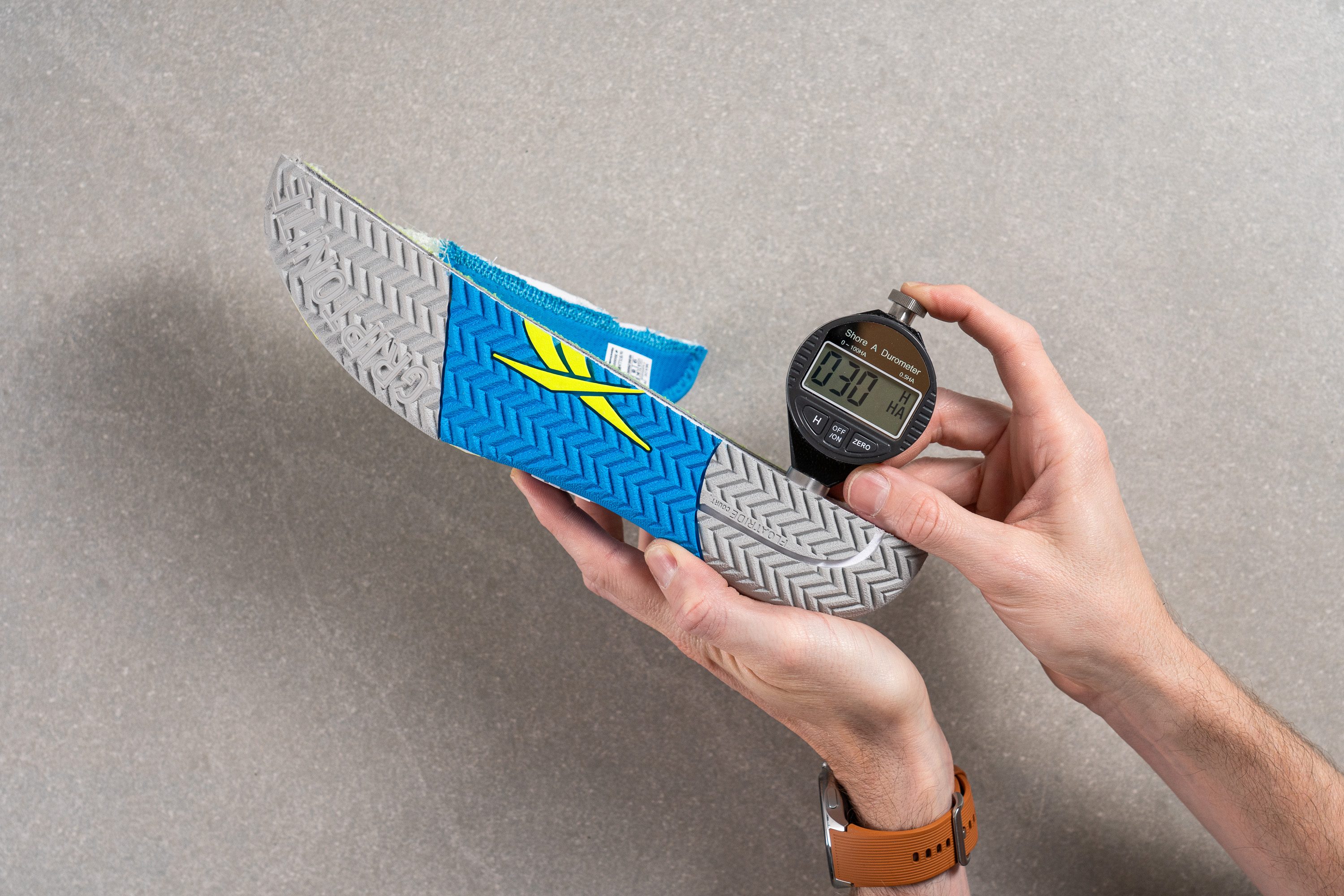
La verdad es que la reactividad de este material nos encantó. El rebote nos pareció fantástico, pero sí que es cierto que nuestros despegues no se sintieron tan llenos de energía por lo fina que es la suela en la zona de los dedos y lo flexible que es el antepié. Vamos, que estos detalles no dejaron que la Floatride ofreciera todo su potencial.
| Nano Court | 29.9 HA |
| Media | 28.1 HA |
Tallaje y ajuste
Talla
Las Reebok Nano Court quedan un poco pequeñas (18 votos).
Toebox width - widest part
Unfortunately, our toebox measurements are slightly distorted by the shoe's external overlays and show as much as 102.3 mm in the widest part of the forefoot.
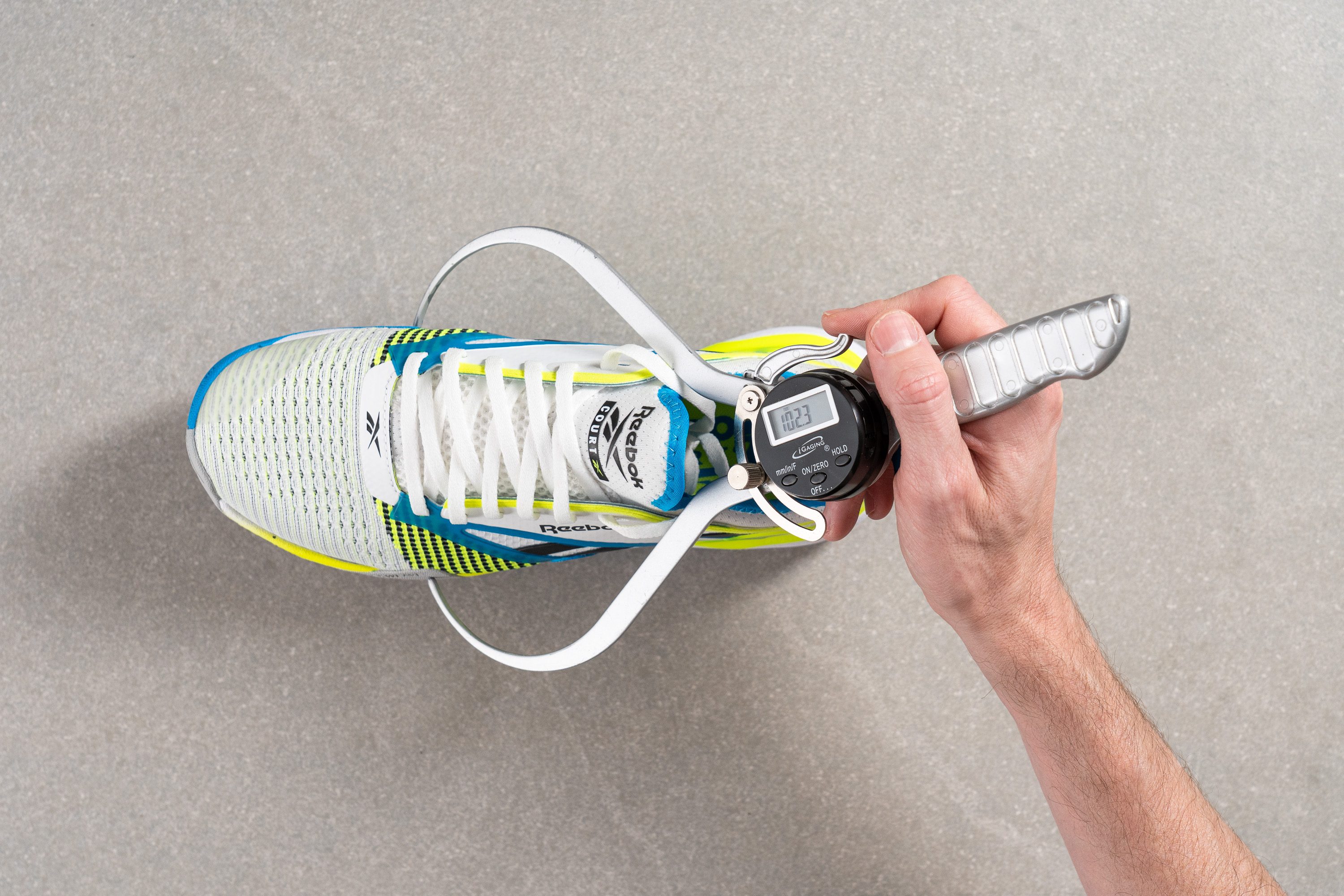
Please take this number with a grain of salt as our medium-width feet felt borderline snug in the Reebok Nano Court.

We are sure that a wide-footed athlete would feel constricted in this Reebok shoe. So, we would highly recommend the K-Swiss Hypercourt Express 2 to these folks instead.
En esta prueba se utiliza una metodología antigua, así que no verás las zapatillas que hemos analizado últimamente en la tabla. Los resultados obtenidos con metodologías distintas no se pueden comparar.
| Nano Court | 102.3 mm |
| Media | 101.0 mm |
Toebox width - big toe
Even though the toebox width at the big toe showed an average measurement of 77.2 mm, it didn't seem to make the Nano Court a more accommodating shoe.
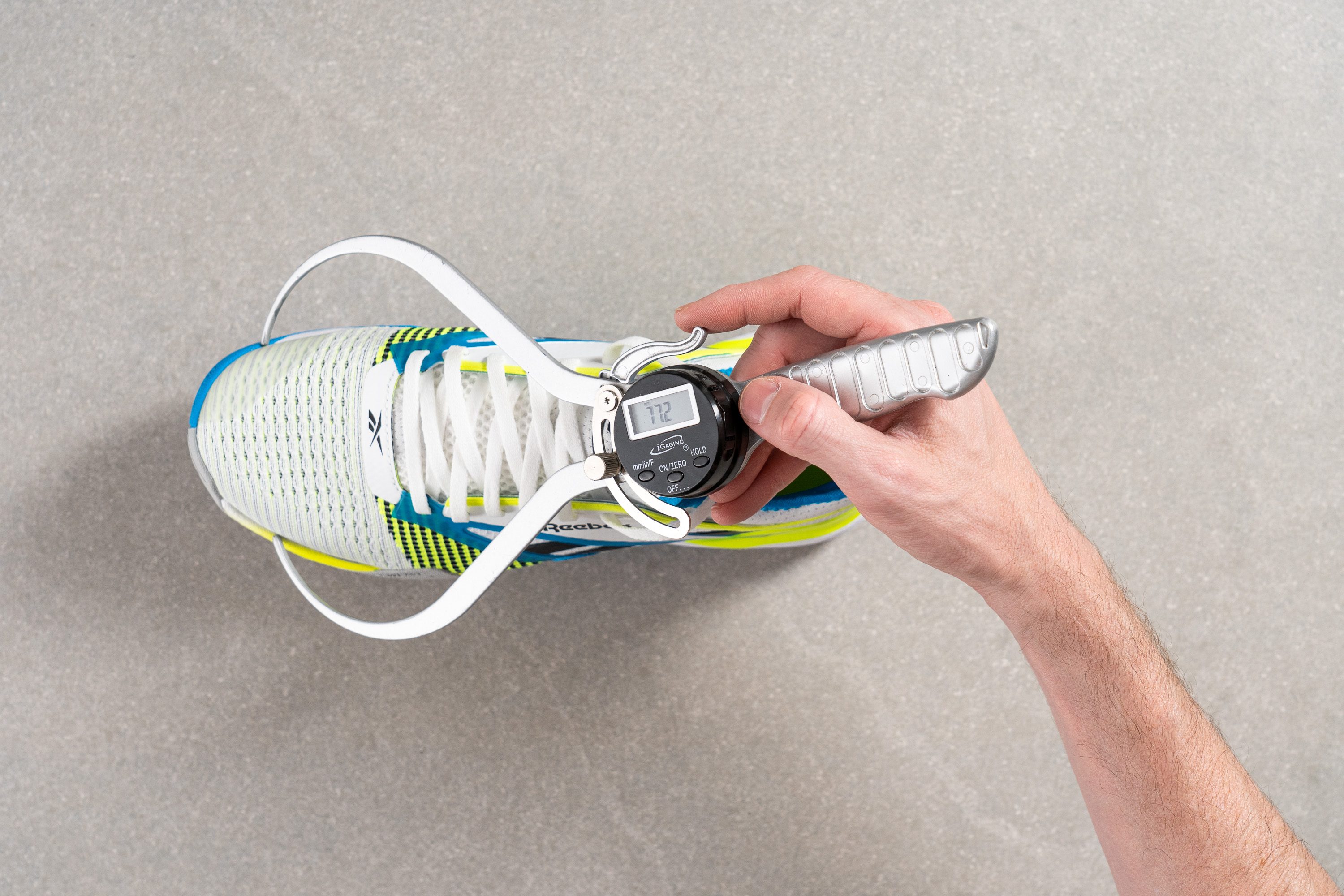
En esta prueba se utiliza una metodología antigua, así que no verás las zapatillas que hemos analizado últimamente en la tabla. Los resultados obtenidos con metodologías distintas no se pueden comparar.
| Nano Court | 77.2 mm |
| Media | 76.9 mm |
Tracción / Agarre
Aunque hemos criticado a las Reebok Nano Court todo lo que hemos querido y más, ahora vamos a hablar de su ventaja más destacada: el agarre de su suela exterior.
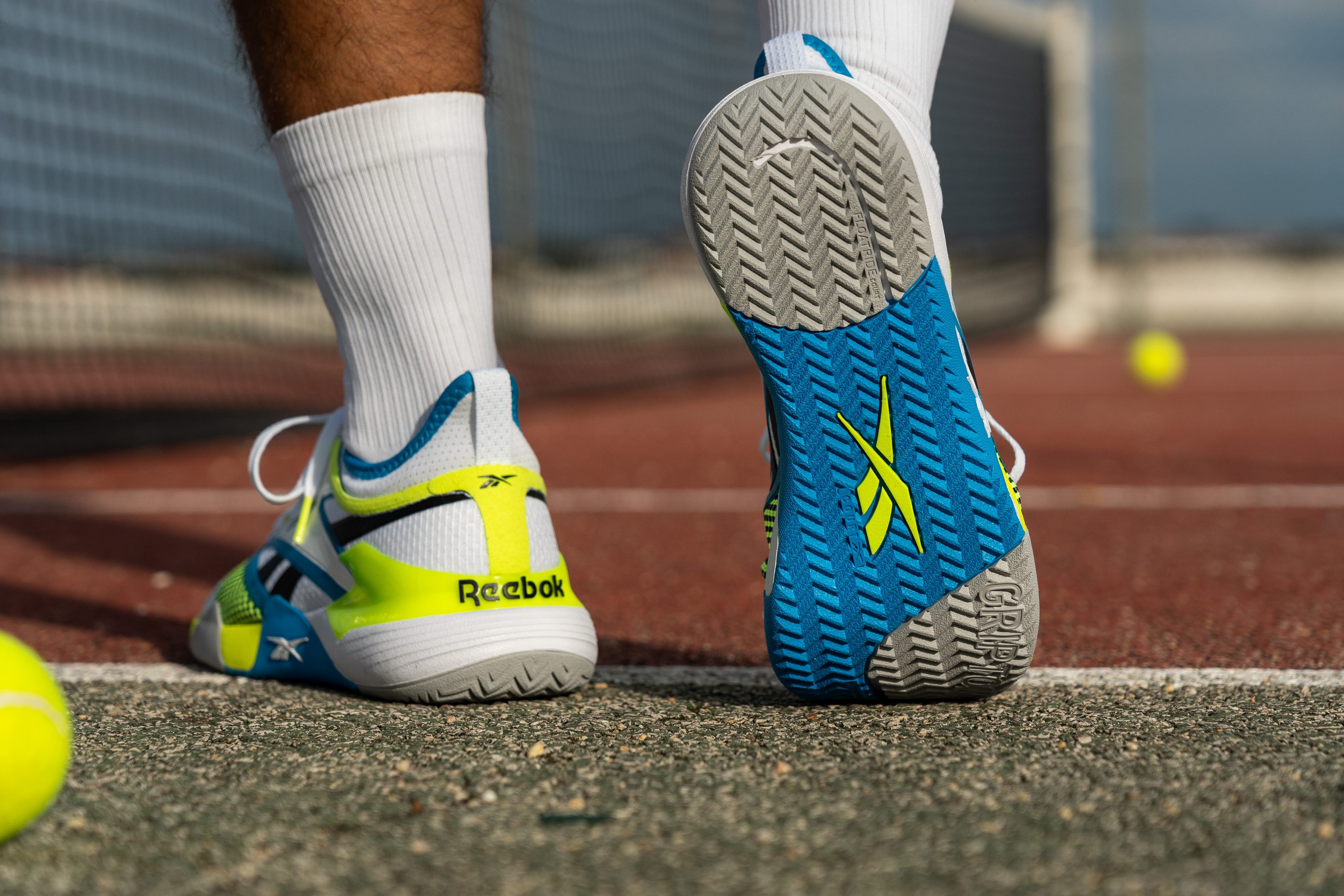
La suela exterior Griptonite de estas zapatillas es más blanda que la media y tiene un relieve muy marcado, además del típico patrón en espiga.
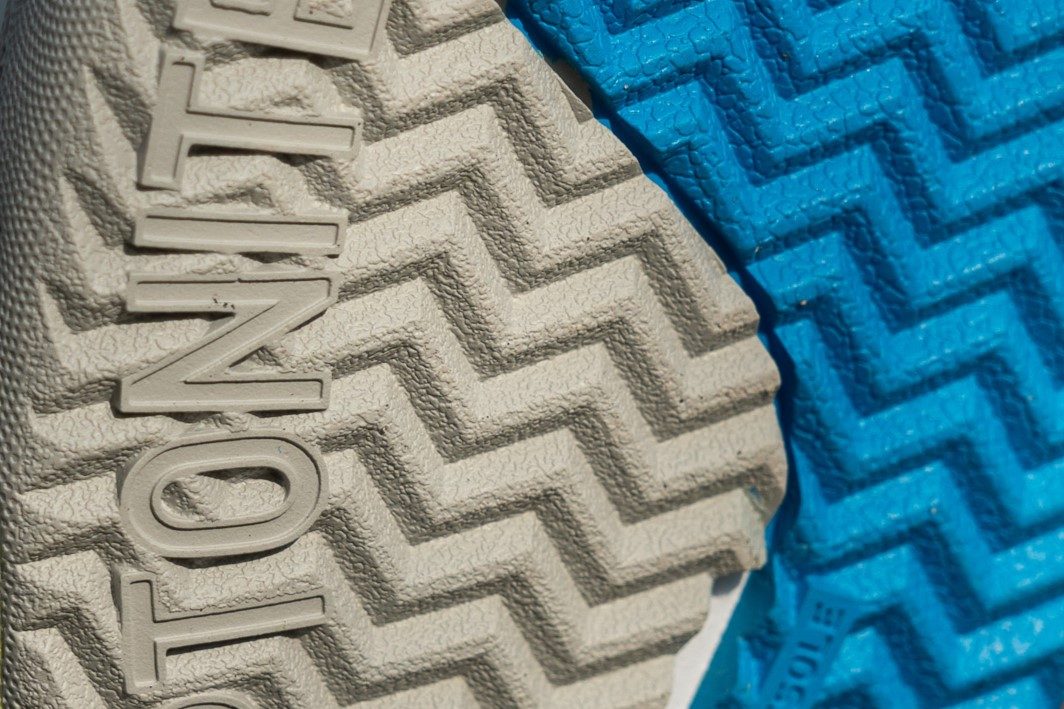
Esta combinación hace que su agarre sea fantástico, así que pudimos frenar sin problemas y empujar con mucha fuerza.
Si Reebok encontrara la forma de mejorar la durabilidad de este caucho, estamos seguros de que se convertiría en todo un éxito en el mercado de las zapatillas de tenis.
Tracción en el antepié
Después de haber criticado un montón las Reebok Nano Court, estamos encantados de poder hablarte (al fin) de sus ventajas, como el agarre de su suela.
Cuando medimos el nivel de tracción de su antepié, nuestra máquina marcó 0,79, que es un resultado estupendo. Vamos, que pudimos frenar de golpe y despegar con mucha fuerza.
| Nano Court | 0.79 |
| Media | 0.76 |
Diseño de la suela exterior
La suela Griptonite es más blanda de lo normal y tiene una textura muy pronunciada además del dibujo de espiga.
Si Reebok encontrara una manera de mejorar la durabilidad de este caucho, estamos seguros de que se convertiría en un éxito totalmente revolucionario dentro del mercado de las zapatillas de tenis.
Flexibilidad / Rigidez
Las Nano Court nos parecieron bastante flexibles nada más sacarlas de la caja.
En el laboratorio, nuestra máquina lo confirmó, ya que estas Reebok solo necesitaron 13,7 N de fuerza para doblarse 30 grados; es bastante menos fuerza de lo que necesitan de media las zapatillas de tenis en esta misma prueba.
Esto es lo que hace que estas Reebok ofrezcan una pisada tan natural y cercana al suelo. Esa fue nuestra experiencia en las pruebas de uso, pero también tenemos que decir que echamos de menos el rebote necesario para que nuestros despegues fuesen explosivos.
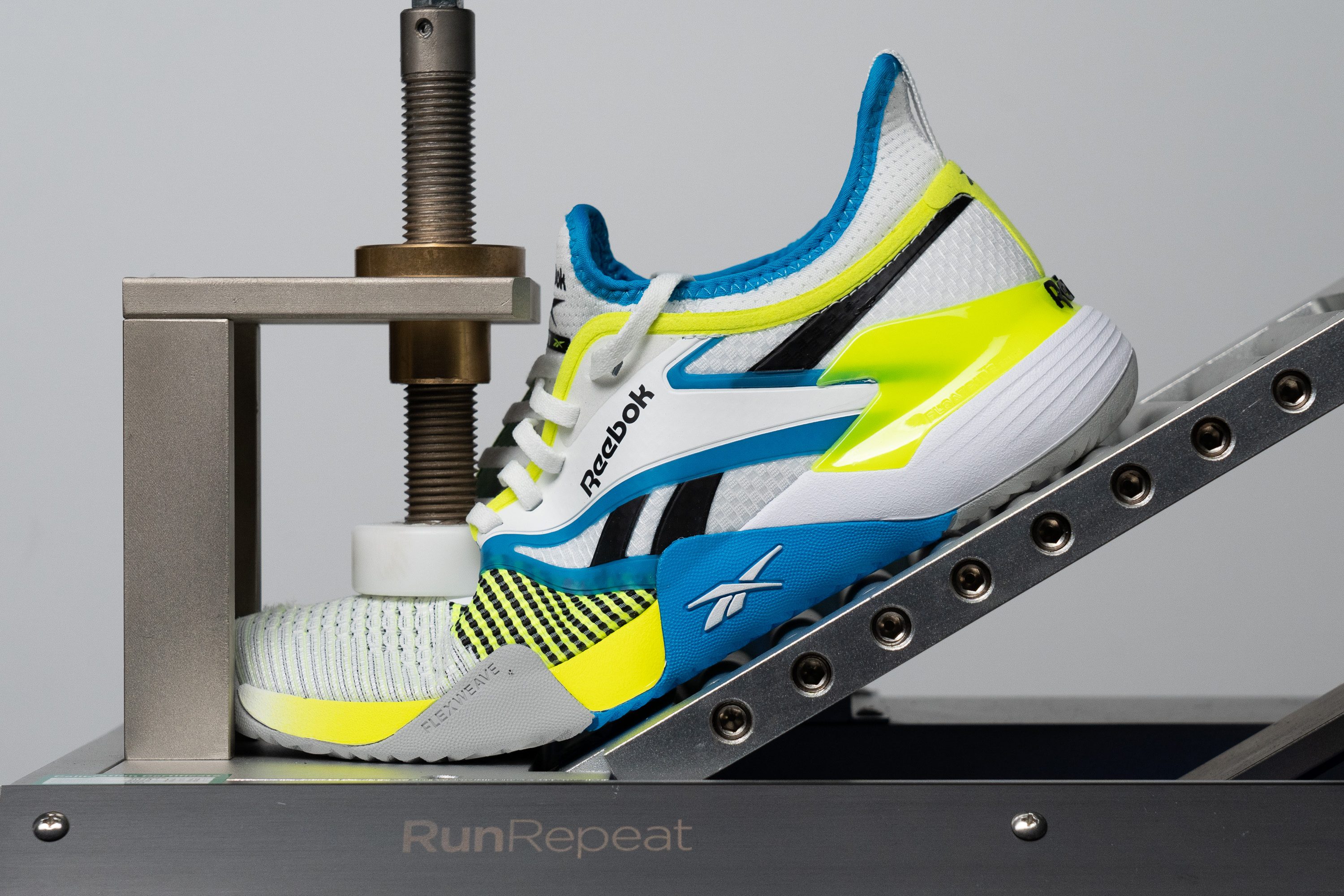
| Nano Court | 13.7N |
| Media | 16.6N |
Peso
El peso de las Reebok Nano Court nos pareció estándar cuando jugamos con ellas, ya que nunca hicieron que nos pesasen los pies. Por eso nos sorprendió que nuestra báscula marcase 385 g, un peso superior a la media en esta talla 9 estadounidense de hombre.
| Nano Court | 13.6 oz (386g) |
| Media | 12.8 oz (362g) |
Transpirabilidad
La parte superior Flexweave de las Reebok Nano Court nos demostró que su ventilación es estupenda, ya que no le costó nada expulsar todo el humo que les metimos dentro a las zapatillas durante nuestra prueba de transpirabilidad.
Cuando examinamos su Flexweave más de cerca con nuestro microscopio, vimos lo grandes que son sus poros.

Tienen unas cuerdas muy finitas pero fuertes que envuelven las partes más gruesas para dejar espacio entre los hilos.
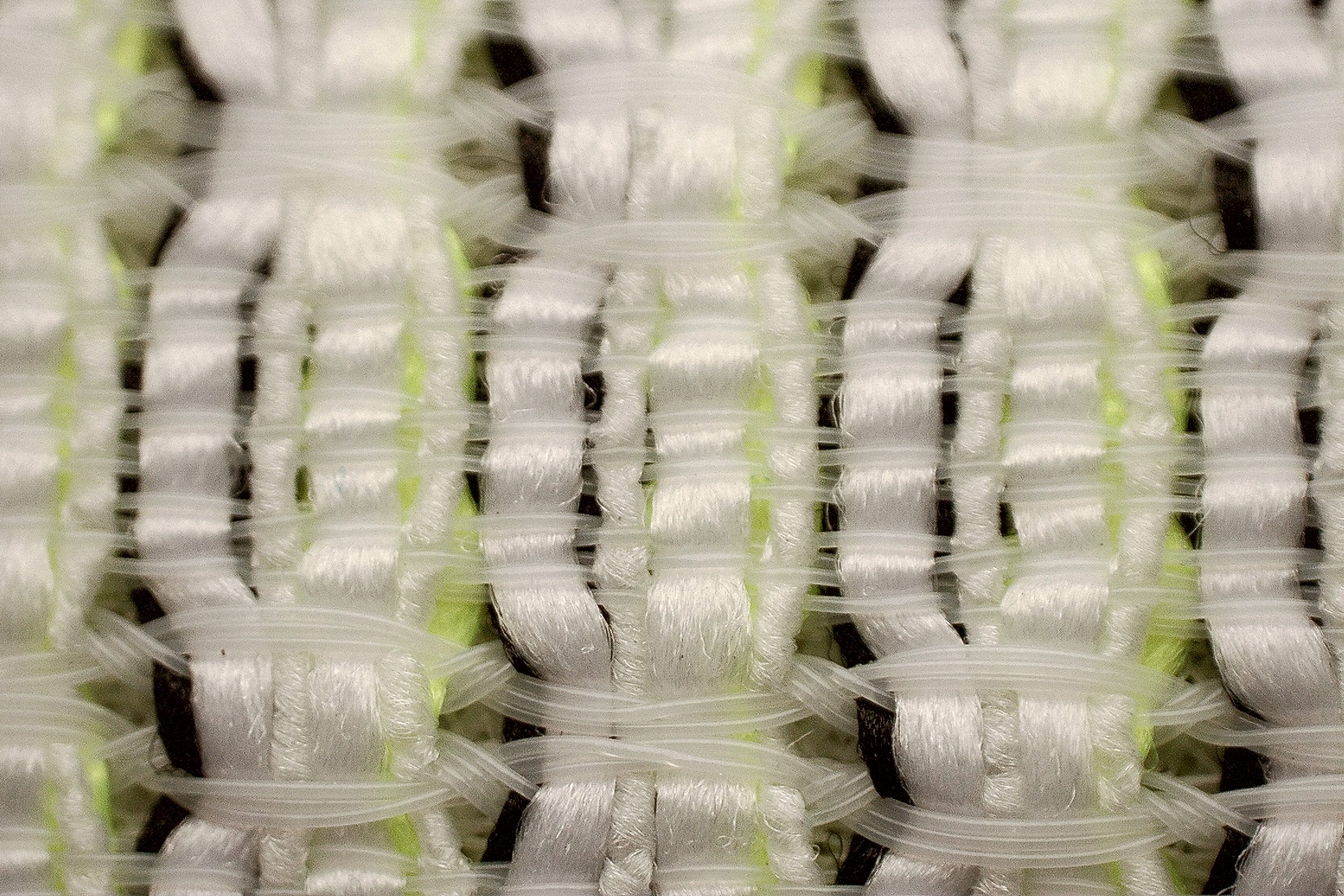
Y como demuestra nuestra prueba de luz, la zona de los dedos no es la única que ofrece una ventilación fantástica. La lengüeta y el empeine también están fabricados con una tela muy porosa que deja que el aire entre y salga.
Después de haber descubierto todo esto, podemos afirmar con seguridad que las Reebok Nano Court te mantendrán los pies bien fresquitos por mucho calor que haga.
Así que estamos encantados de darles la máxima puntuación en transpirabilidad, un 5/5.
| Nano Court | 5 |
| Media | 3.2 |
Estabilidad
Prueba de estabilidad lateral
Después de comprobar la estabilidad lateral de las Reebok Nano Court, podemos decir que es bastante sólida. No está al mismo nivel que la de las Adidas Barricade o la de las ASICS Gel Resolution, pero es adecuada para la mayoría de jugadores cuyo estilo de juego implica moverse por toda la pista.
Reebok ha añadido un montón de componentes estabilizadores en este modelo, mira:
- Las protecciones laterales Rubber Aid (goma azul y gris que van de la suela hacia arriba).
- El hilo no elástico (el patrón a modo de tablero de ajedrez en el antepié).
- La gruesa protección sintética (con el logotipo de Reebok).
- El clip de TPU en el talón (amarillo, alrededor del talón), etc.
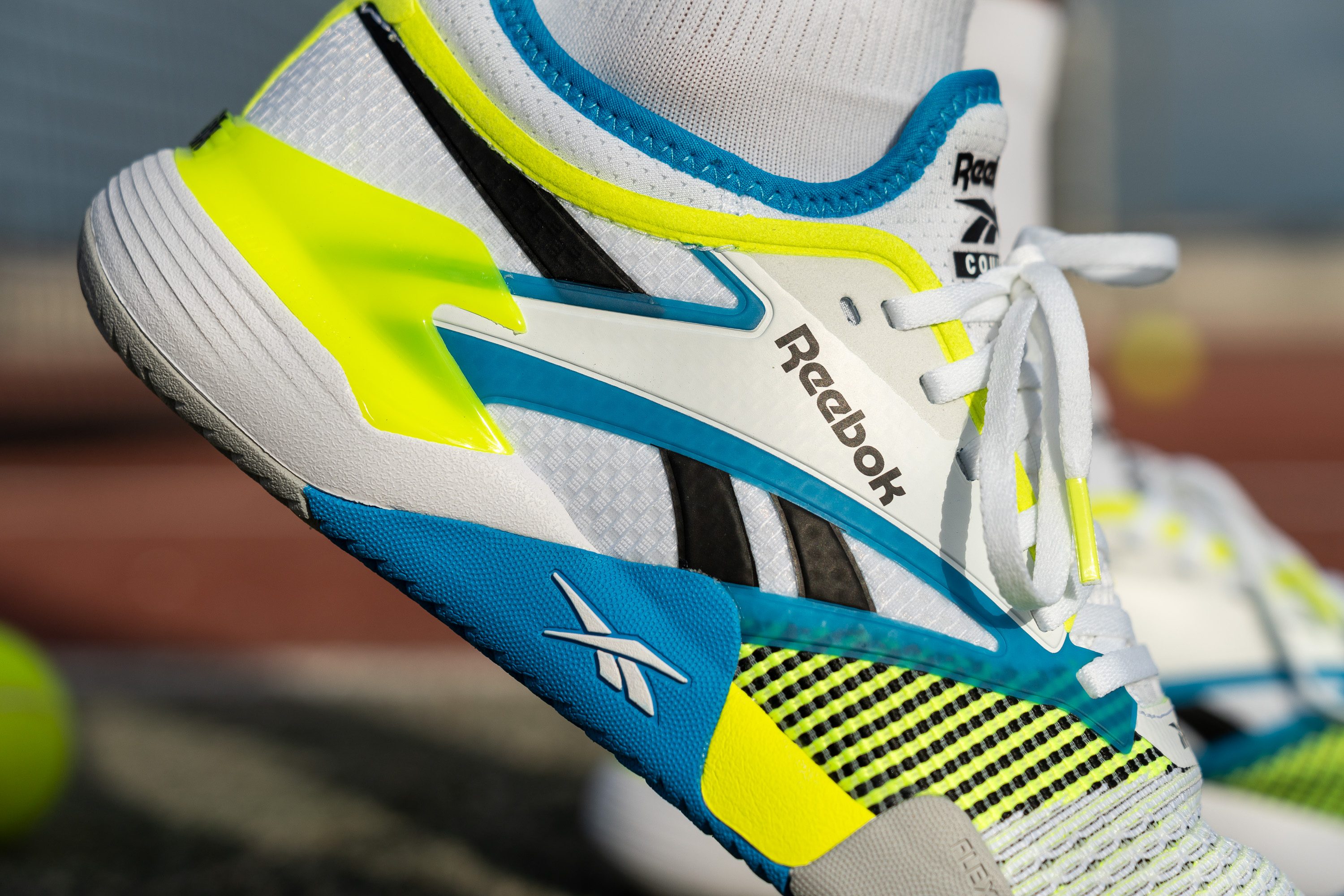
¡Y estamos encantados de poder decirte que todos cumplen lo prometido!
Si Reebok hubiera ampliado la mediasuela de las Nano Court, habría mejorado mucho la estabilidad de estas zapatillas, pero hablaremos de esto más adelante.
Rigidez torsional
Podemos ver claramente cómo todos los componentes de este modelo trabajan juntos cuando intentamos retorcer las Nano Court lateralmente.
Las zapatillas apenas ceden y no hay movimiento ni en la parte del talón ni en la del mediopié. En la pista, esto significa que tu pie no bailará de un lado al otro en los desplazamientos laterales.
Por lo tanto, le hemos dado un 4/5 a estas Reebok en rigidez torsional.
| Nano Court | 4 |
| Media | 4.4 |
Rigidez del contrafuerte del talón
La sujeción del talón de las Nano Court también nos demostró ser bastante fuerte.
Un clip de TPU rígido en el talón alrededor de la base del pie evitó que nuestros talones se moviesen de un lado a otro durante nuestras pruebas de uso.
Pero el resto del contrafuerte del talón también tiene una buena estructura, así que se llevó un 4/5 en nuestra prueba manual de rigidez.
| Nano Court | 4 |
| Media | 4.1 |
Anchura de la mediasuela - antepié
Al darle la vuelta a las Nano Court, nos dimos cuenta de que su mediasuela era más bien estrecha, sobre todo en el mediopié.
Estamos acostumbrados a que las zapatillas de tenis tengan extensiones de la suela, así que estas Reebok nos sorprendieron un poco al principio. En la parte más ancha del antepié, nuestro calibre marcó 107,1 mm, así que es unos milímetros más estrecha que la media.
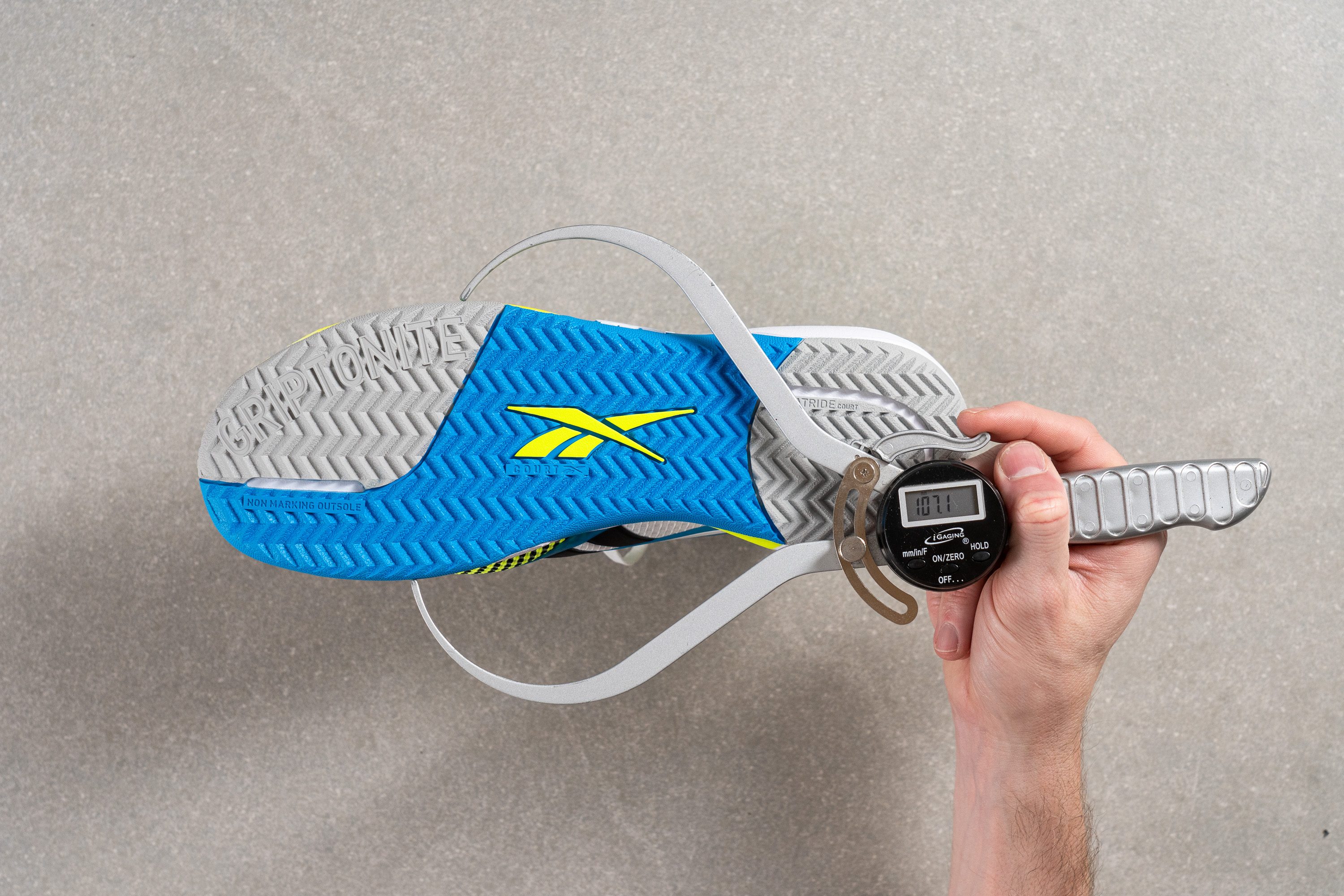
No diríamos que esta zona es estrecha hasta ser preocupante, pero los jugadores con pies anchos y los que dominan la línea de fondo probablemente sientan que les falta mucha anchura.
| Nano Court | 107.1 mm |
| Media | 111.9 mm |
Anchura de la mediasuela - talón
La mediasuela de este modelo también es más estrecha que la media en la zona más ancha del talón, ya que nuestro calibre marcó 86,1 mm.
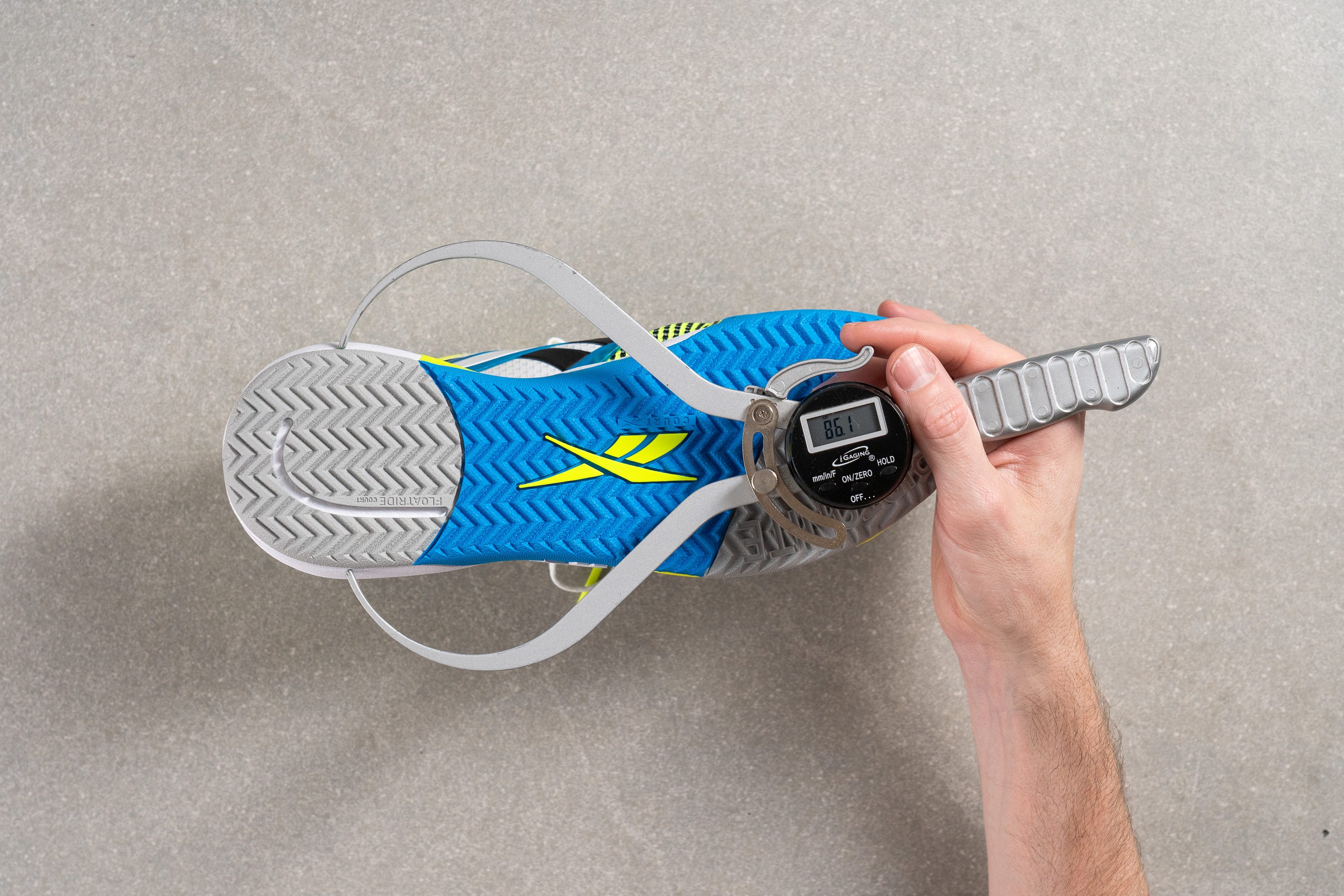
| Nano Court | 86.1 mm |
| Media | 89.6 mm |
Durabilidad
Durabilidad de la protección delantera
Para proteger la integridad de las Nano Court cuando arrastramos los dedos al jugar, Reebok decidió añadir caucho ToeTection y una superposición de TPU translúcida en la cara interna de la parte delantera de estas zapatillas.

Cuando le dimos con el papel de lija al caucho ToeTection azul durante 22 segundos a 10K RPM de velocidad, los daños no fueron nada del otro mundo. Su increíble resistencia a la abrasión nos hizo sentirnos seguros al movernos de un lado al otro durante nuestras pruebas de uso.
Pero... también tenemos malas noticias, y es que si tocas la pista con la parte Flexweave (aunque esté recubierta de TPU), no tardará mucho en romperse. Puedes ver lo terrible que es el daño en esta zona si lo comparamos con lo bien que aguantó el caucho ToeTection.
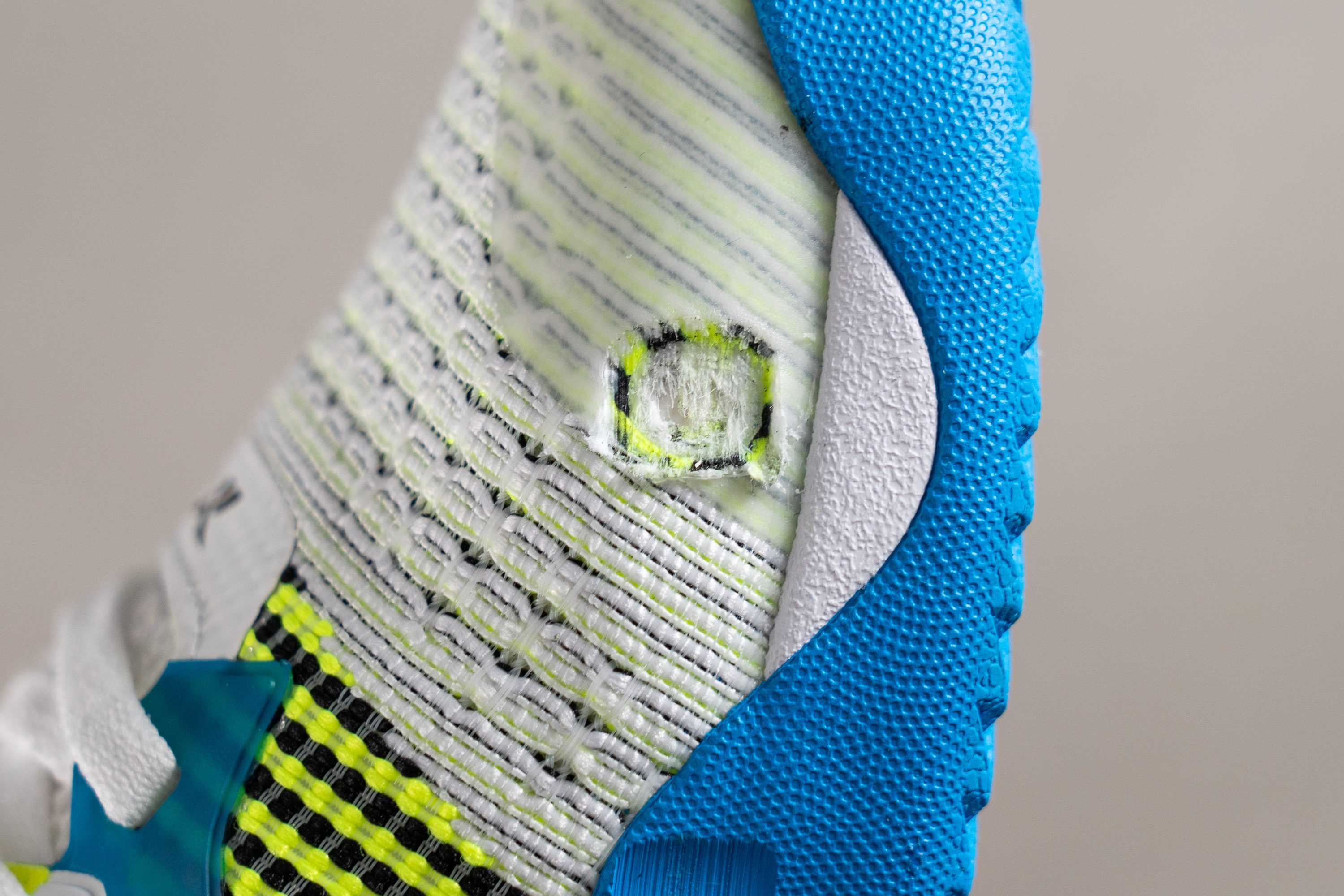
Esto nos ha hecho reducir la puntuación en durabilidad de la protección de la parte delantera de las Reebok Nano Court hasta un 3/5. Vamos, que no está ni cerca de la protección que ofrecen otras zapatillas de tenis del mismo rango de precios.
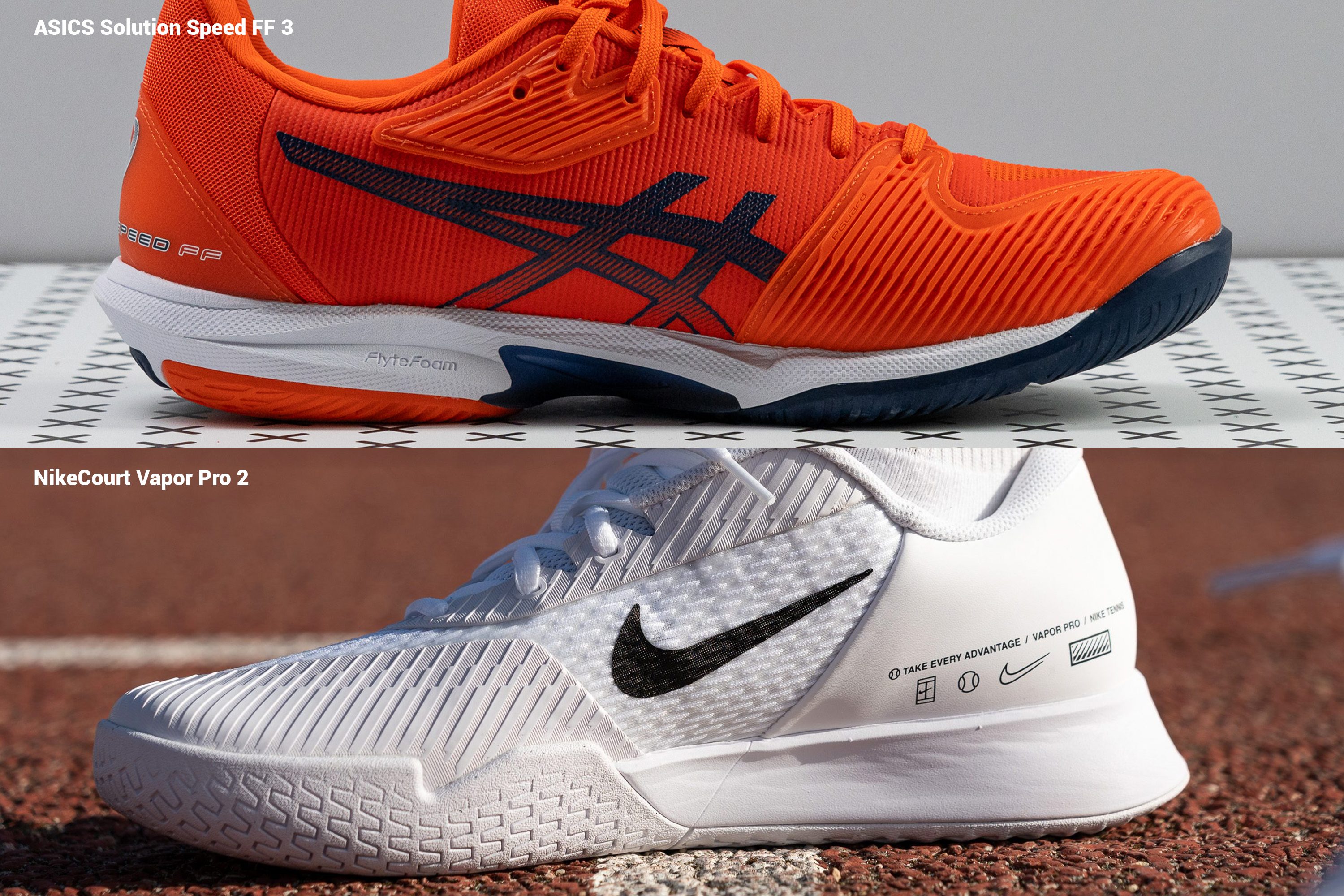
| Nano Court | 3 |
| Media | 3.3 |
Durabilidad de la parte delantera
Como puedes ver, el Flexweave no se lleva nada bien ni con nuestro Dremel, ni con las superficies abrasivas, como las pistas duras.
Como demuestra nuestra prueba con dicha herramienta, este material carece de la resistencia a la abrasión necesaria para soportar ese tipo de daños a largo plazo.
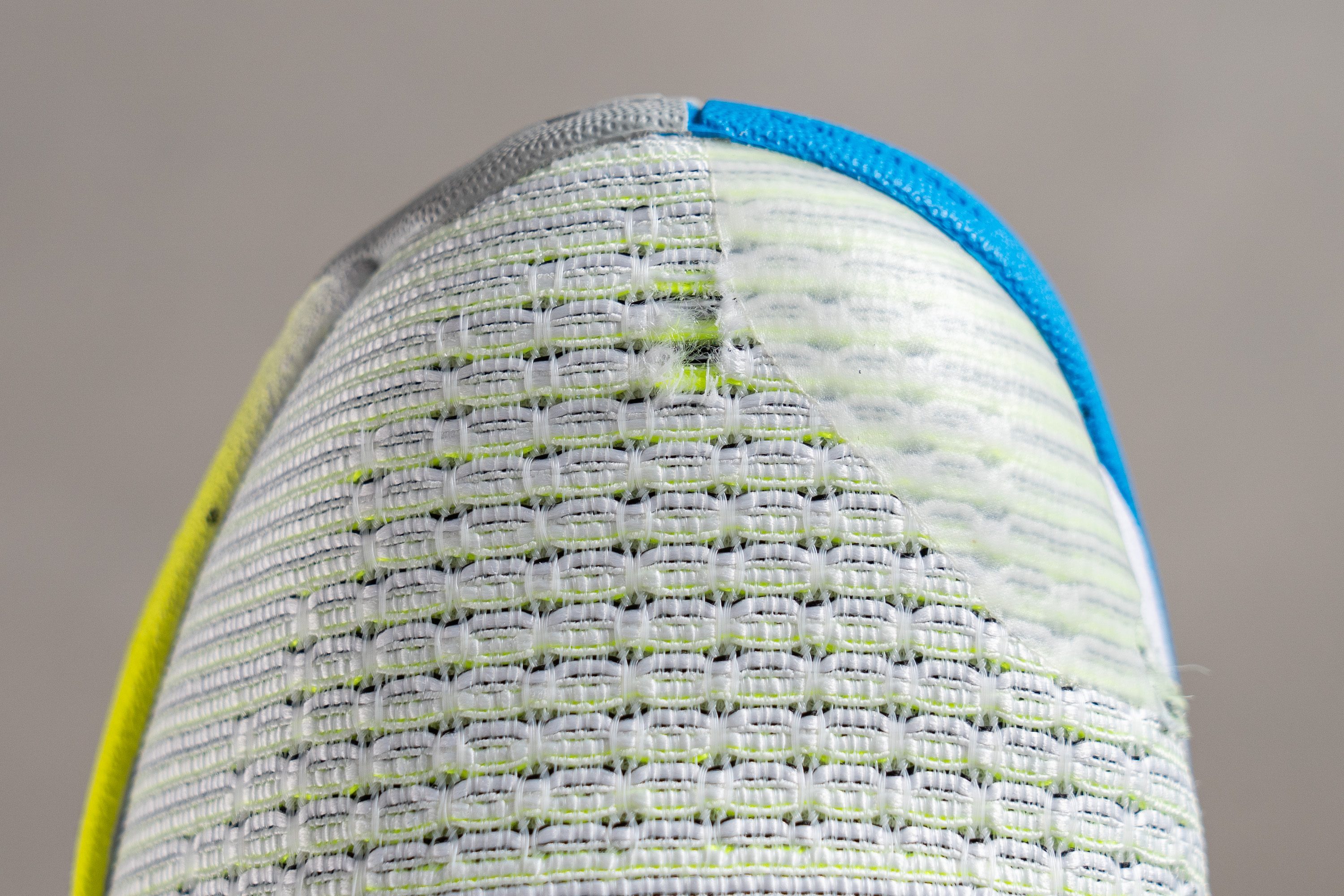
La verdad es que nos sorprendió que nuestro Dremel no le hiciese un agujero a la zona de los dedos pero, con solo echarle un ojo a los daños, ya nos podemos imaginar que tampoco es que fuese a tardar mucho en ocurrir.
Pero como el material aguantó, no le dimos la puntuación más baja en durabilidad, así que las Nano Court se han llevado un 3/5 en durabilidad de la parte delantera.
| Nano Court | 3 |
| Media | 3.7 |
Durabilidad del acolchado del talón
Lo bueno es que no estamos nada preocupados por el forro interno de estas Reebok.
Este material, que se parece al neopreno, aguantó bien nuestra prueba Dremel, sin mostrar más que un pequeño rasguño.
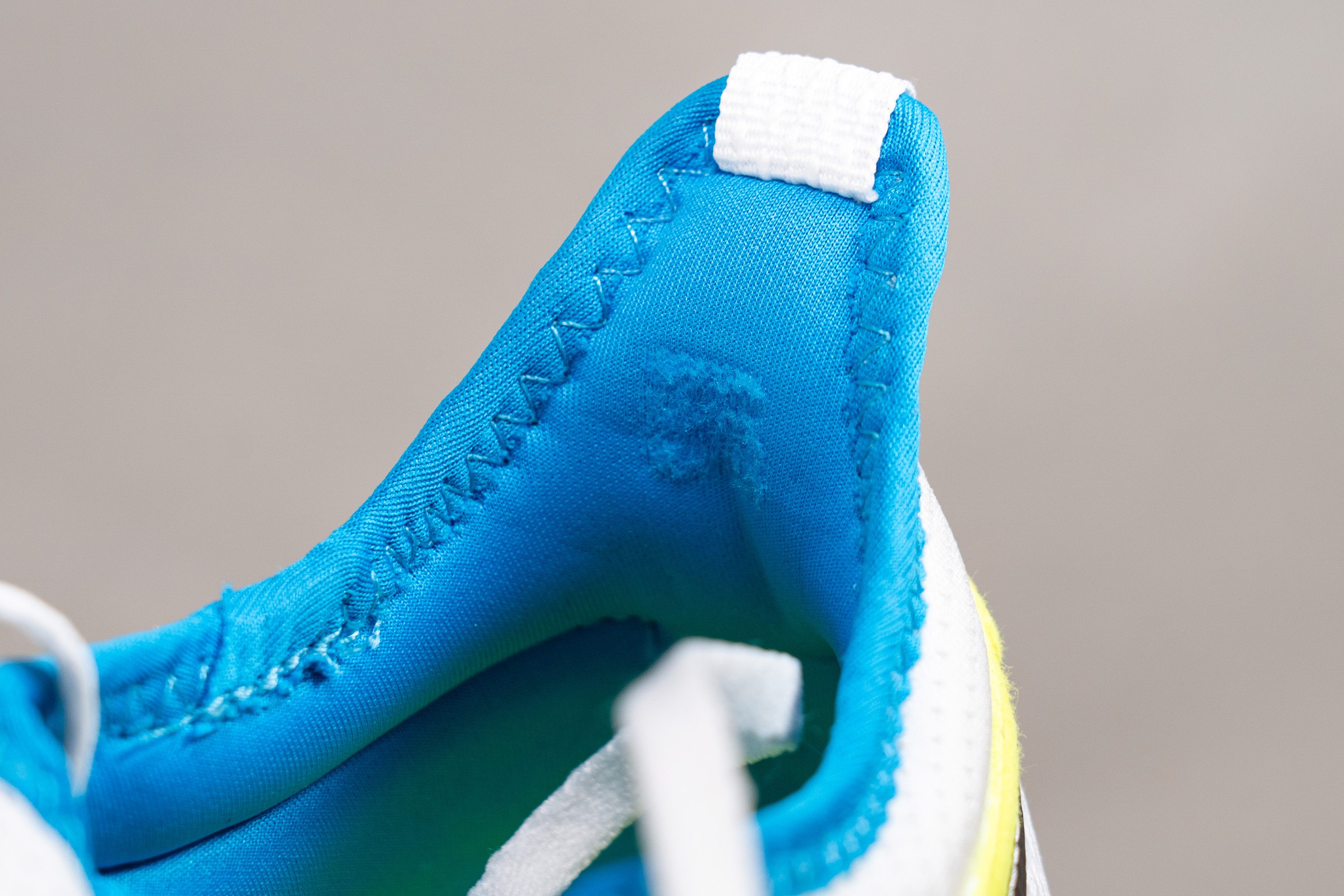
Confiamos en su capacidad para resistir la fricción, así que le hemos dado un merecido 4/5 en nuestra prueba de durabilidad del acolchado del talón.
| Nano Court | 4 |
| Media | 3.3 |
Dureza de la suela
Teníamos muchas ganas de ver qué tipo de suela exterior había ideado Reebok para el primer par de tenis que ha sacado en años, pero... qué peligro, ¡se ha quedado muy corta en durabilidad!

Primero, descubrimos que el caucho que utiliza es un poco más blando de lo que normalmente vemos en las zapatillas de tenis. Nuestro durómetro marcó 80,0 HC, que es una de las cifras más bajas/blandas que hemos visto en un modelo dentro de esta categoría.
Lo bueno es que este caucho tan blando ofrece un agarre fantástico, pero sobre esto hablaremos más adelante.
| Nano Court | 89.5 HC |
| Media | 86.0 HC |
Durabilidad de la suela
En cuanto nuestro Dremel tocó el caucho ya lo teníamos claro... se lo iba a comer con patatas.
Después de 22 segundos, vimos que el patrón de la suela se había quedado completamente liso en esa zona. Según nuestro medidor de desgaste de neumáticos, los daños alcanzan una profundidad de 2,1 mm, que es el peor resultado que hemos obtenido en esta prueba de durabilidad...
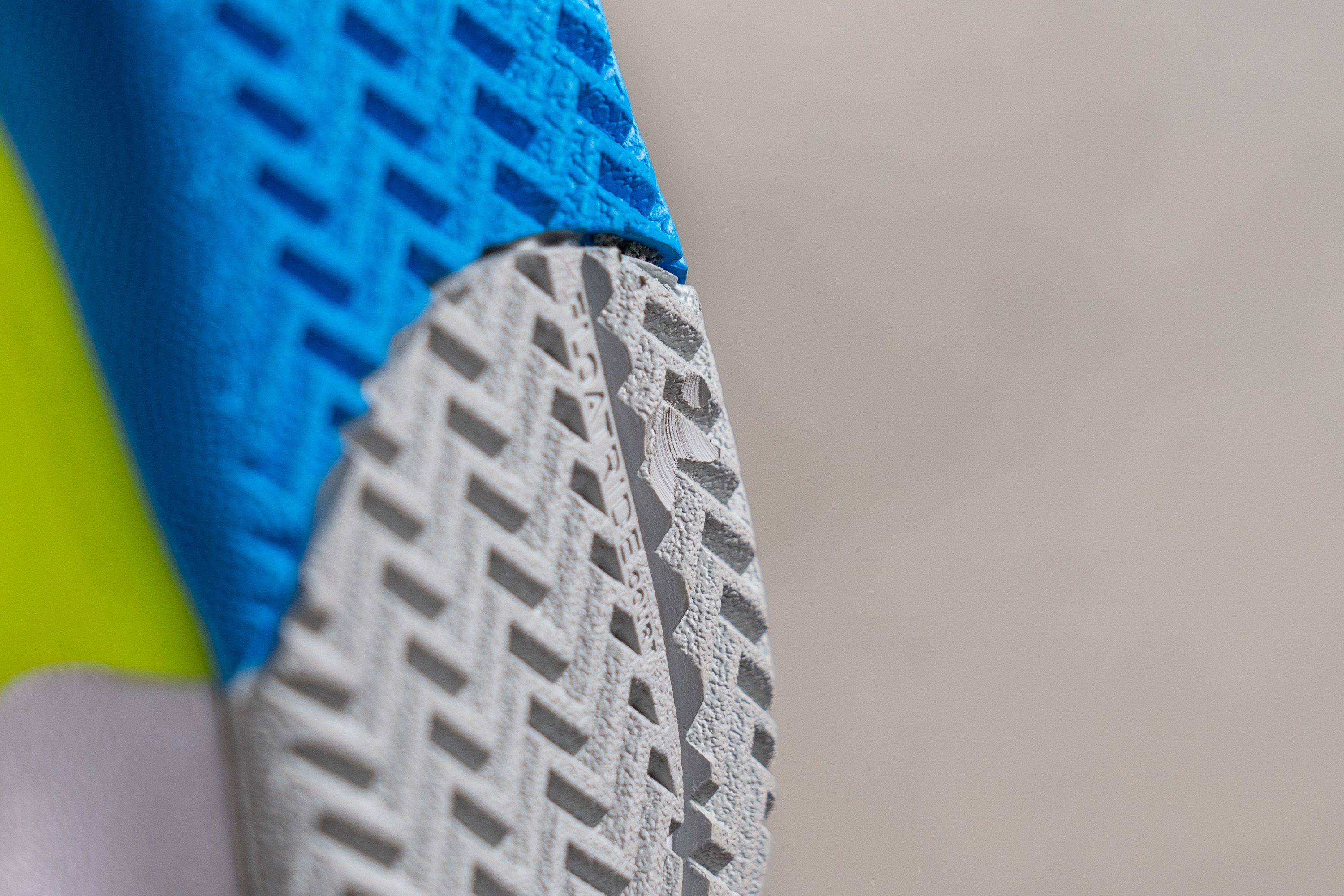
Otra razón más para NO recomendarte las Reebok Nano Court si vas a jugar en pistas duras al aire libre... Si quieres que estas zapatillas te duren, te recomendamos limitar su uso a pistas cubiertas.
| Nano Court | 2.1 mm |
| Media | 0.8 mm |
Grosor de la suela
Aunque su suela exterior alcanza los 4,0 mm de grosor, que está a la altura de la media de las zapatillas de tenis, no creemos que su vida útil vaya a ser la misma. Vamos, que su resistencia a la abrasión no es lo suficientemente fuerte.
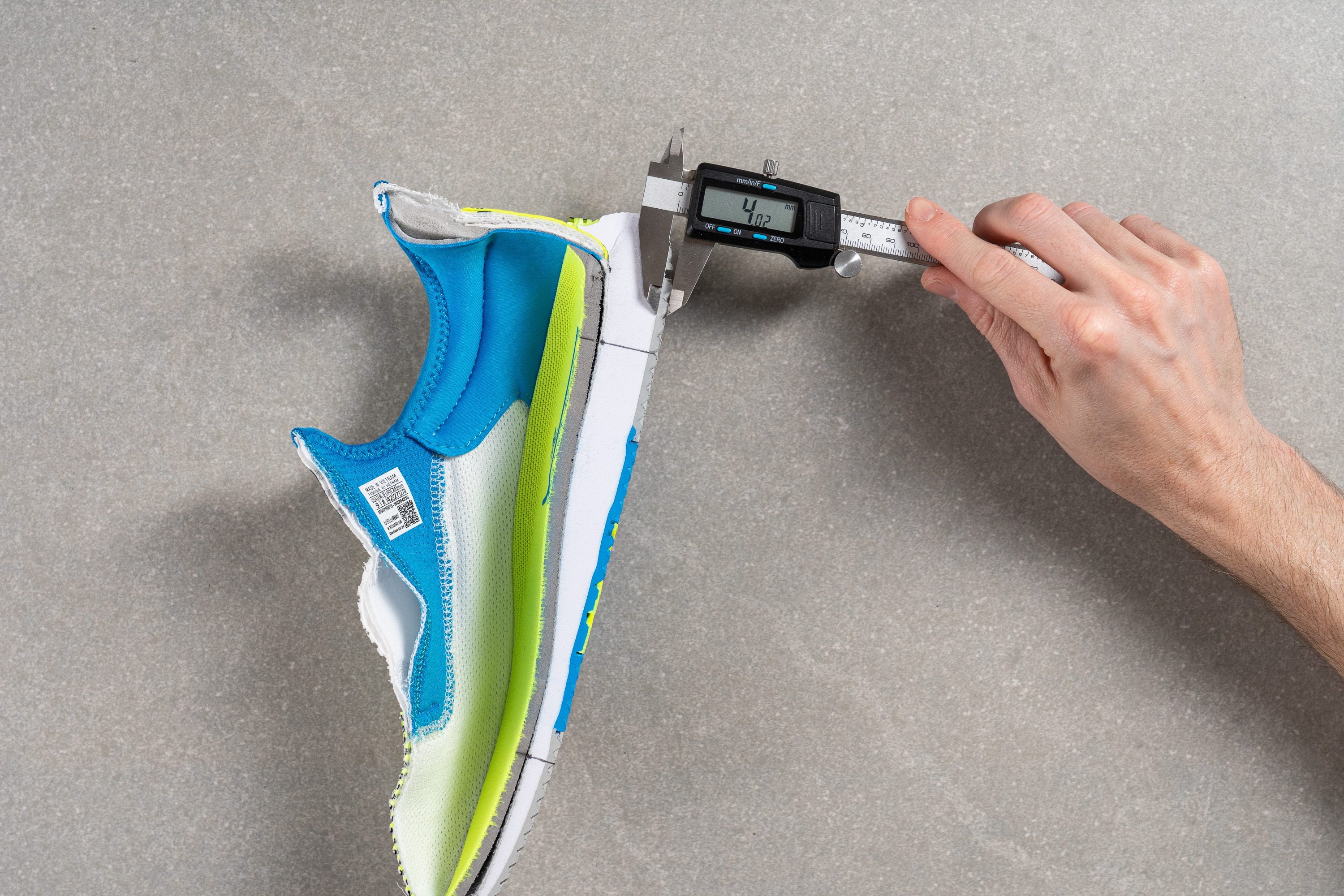
| Nano Court | 4.0 mm |
| Media | 4.2 mm |
Varios
Grosor de la plantilla
La acolchadísima plantilla de las Nano Court desempeña un papel fundamental en su amortiguación. Con sus 7,1 mm, representa casi 1/3 de la altura de la suela del talón.
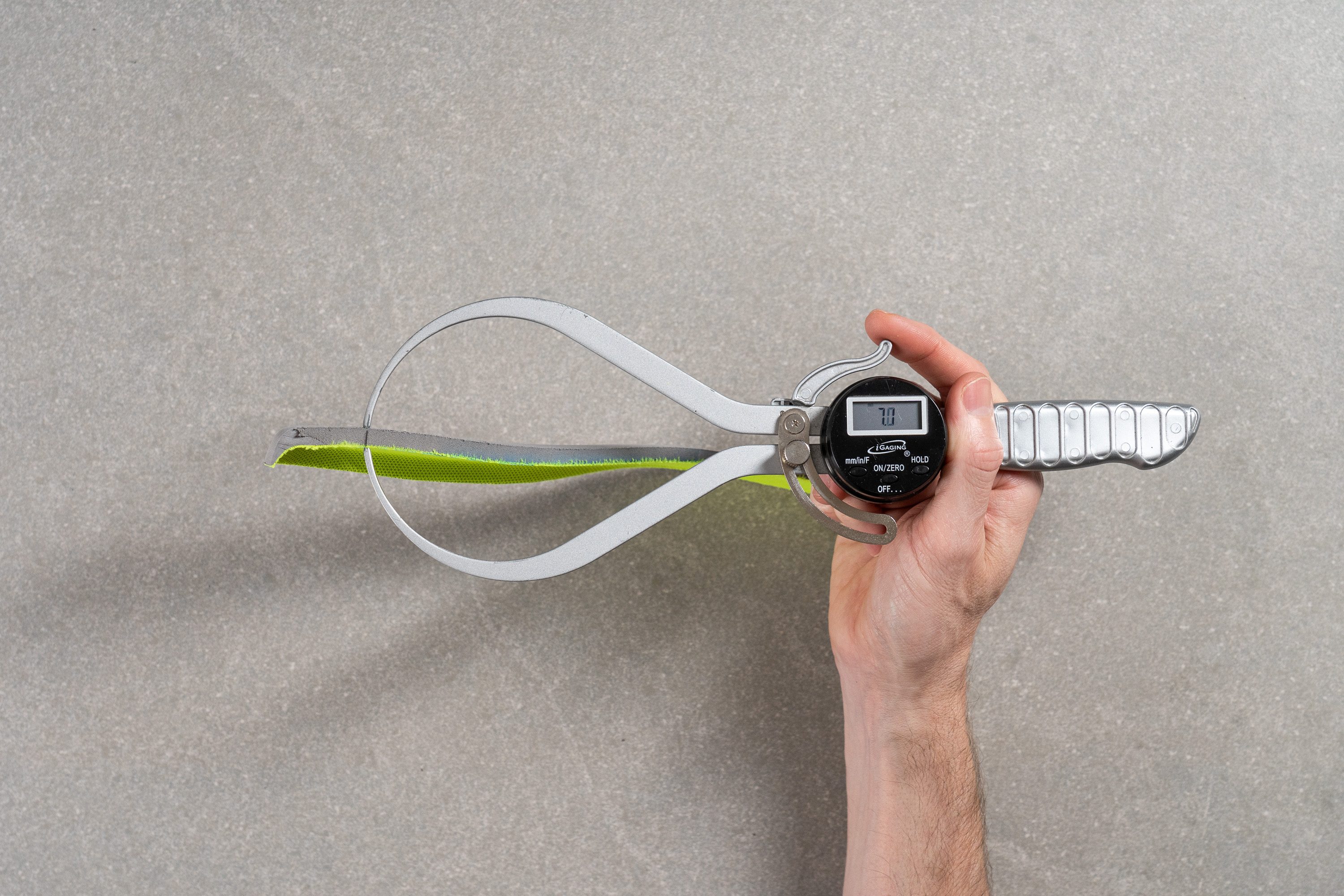
Tiene una forma que se adapta al pie con un arco alto que le ofrece sujeción al mediopié.
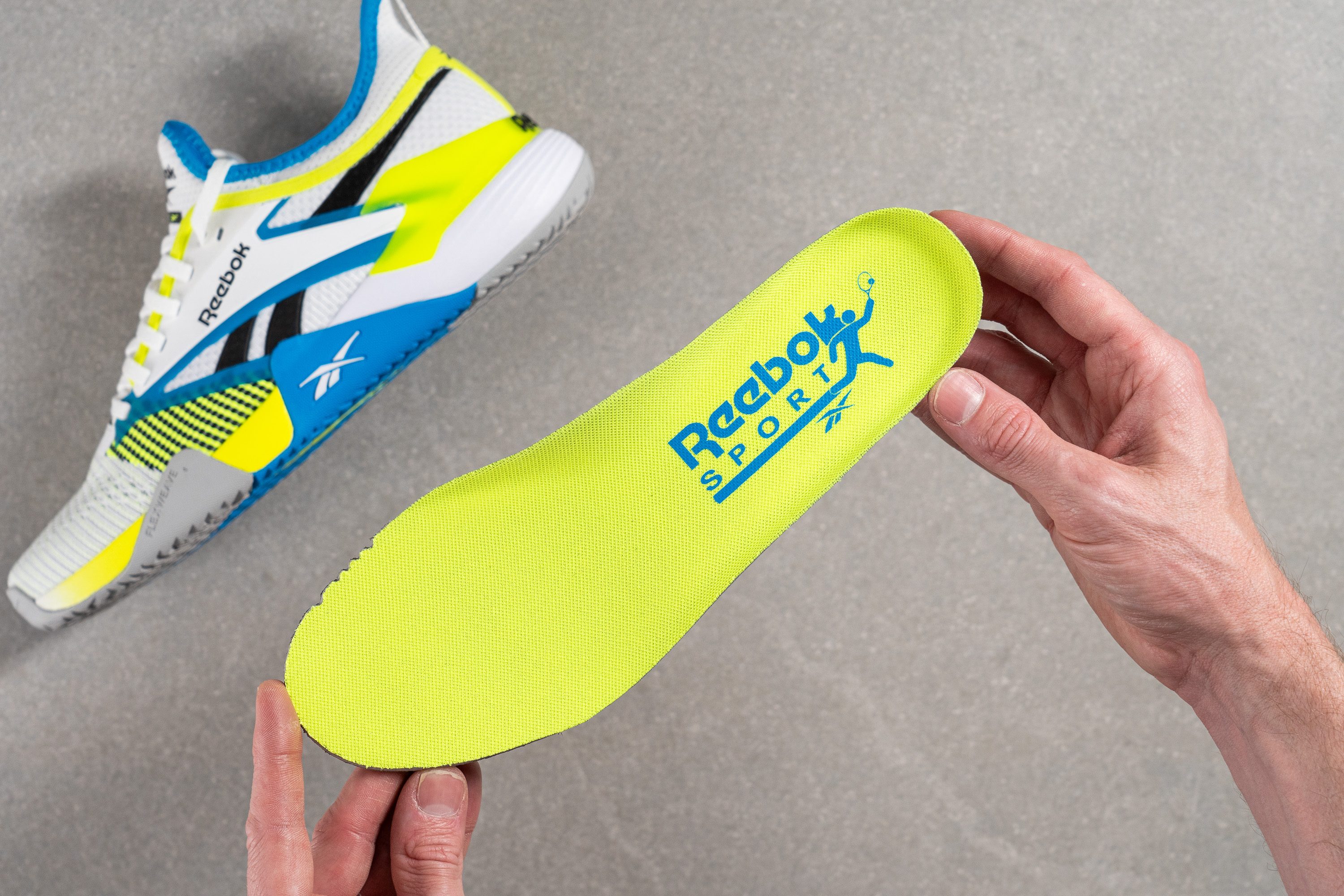
Pero esto también es algo que puede traerles problemas a las personas con pies anchos y planos. El arco puede resultar irregular y ocupar espacio dentro de las Nano Court, que ya son unas zapatillas con un ajuste ceñido de por sí.
| Nano Court | 7.1 mm |
| Media | 5.1 mm |
Plantilla extraíble
Si no eres fan de la plantilla moldeada de este modelo o si prefieres/necesitas unas plantillas a medida, estas Reebok no te pondrán ningún impedimento a la hora de quitársela.
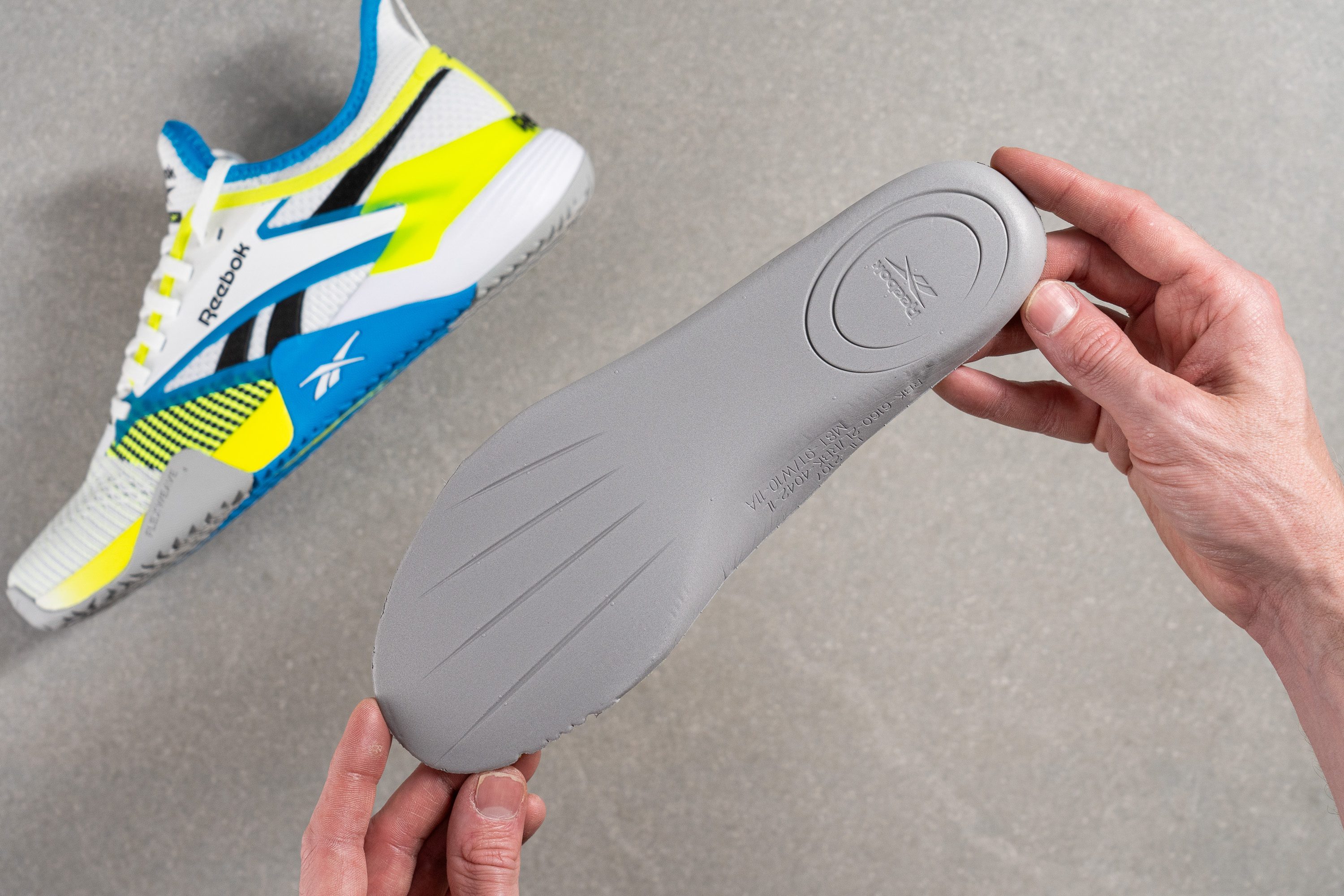
| Nano Court | Sí |
Acolchado de la lengüeta
Las Reebok Nano Court tienen un interior muy poco acolchado. Su lengüeta no tiene mucha espuma, con solo 6,0 mm de grosor según nuestro calibre.
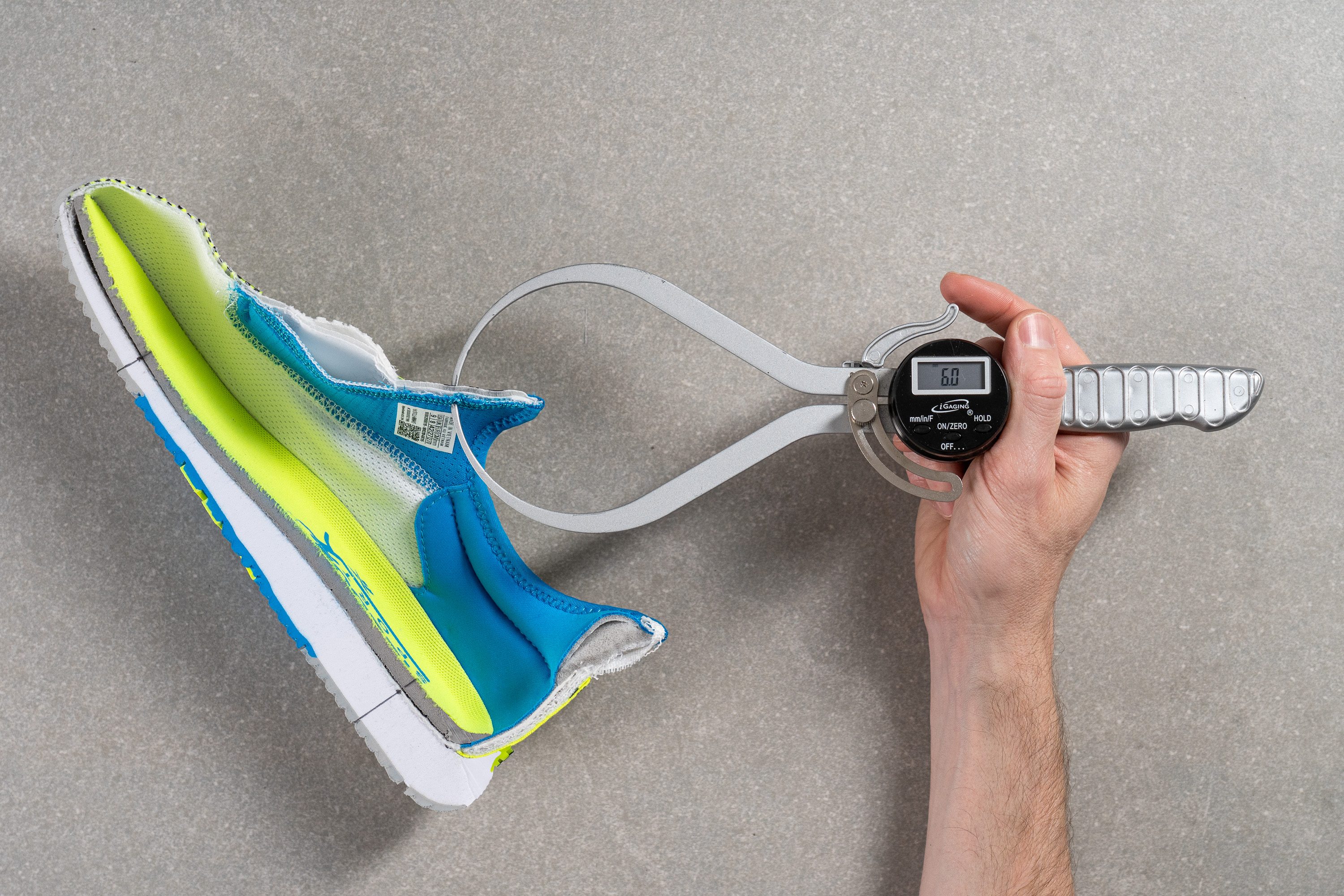
Esto hace que estas zapatillas no sean las más cómodas del mundo, pero sí que ofrecen un ajuste que se adapta al pie.
| Nano Court | 6.0 mm |
| Media | 8.1 mm |
Lengüeta: tipo de refuerzo
El diseño cerrado y tipo botín de este modelo también es un problema para las personas con pies anchos y/o con arcos/empeines altos.

La boca de estas zapatillas solo se puede abrir hasta cierto punto, así que a algunas personas probablemente les cueste bastante ponérselas.
Cuando te las consigues poner, su ajuste ceñido es muy agradable, pero esta dificultad puede volverse un punto de inflexión para algunas personas.
| Nano Court | Botín |
Precio
Estamos de acuerdo con la marca en que el precio de estas zapatillas, que está por debajo de la media, es justo, sobre todo al ser experimentales. Pero también nos parece justo que no entren dentro de la categoría de modelos asequibles, ya que al final utilizan materiales avanzados (Flexweave, Floatride, etc.).
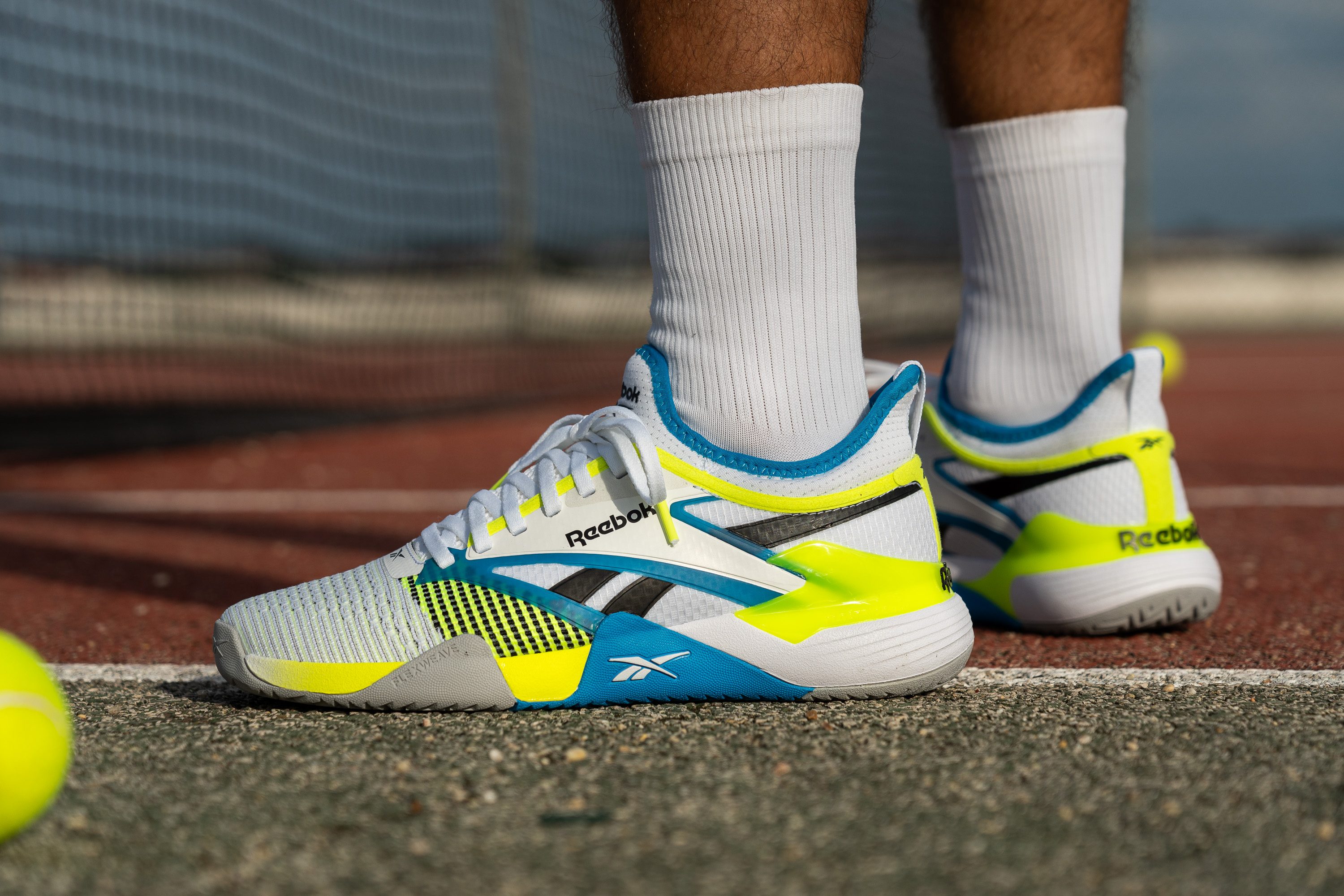
Pero si esperas obtener la mejor relación calidad-precio de las Reebok Nano Court, tienes que asegurarte de que ninguno de sus defectos sea un punto de inflexión para ti (échale un ojo a nuestra sección de Quién NO debería comprárselas).
| Nano Court | $120 |
Tirador del talón
Para que te puedas calzar un poco más rápido, las Nano Court tienen un tirador grande en el talón.
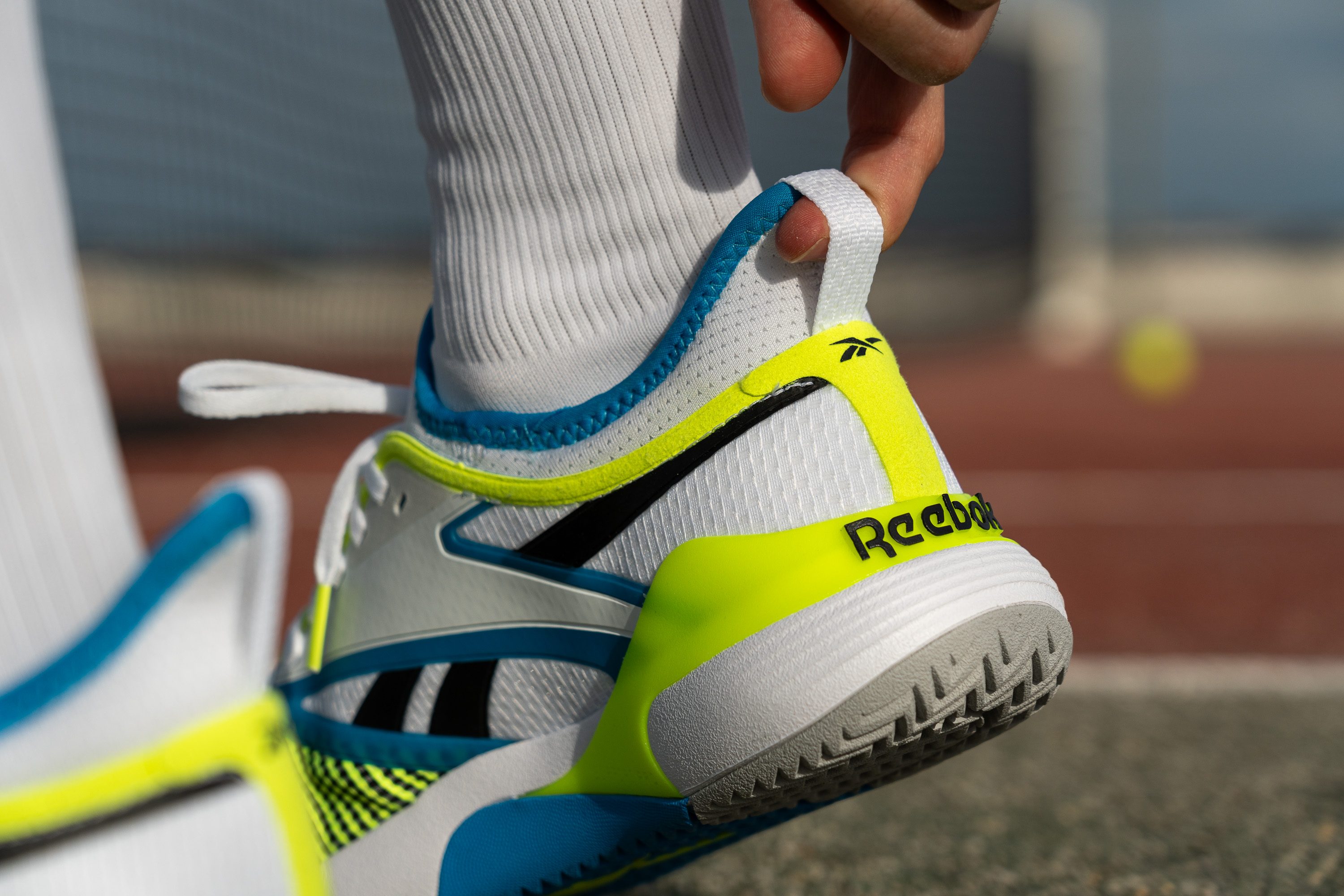
| Nano Court | Tirador circular |

